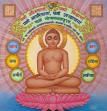


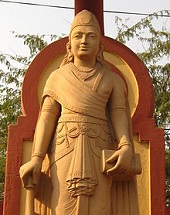

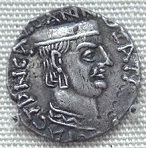


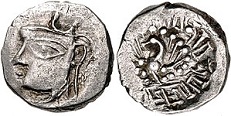
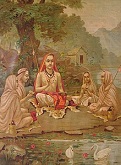
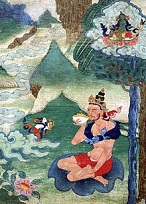
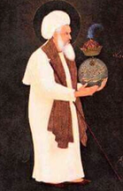
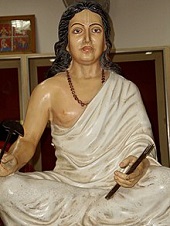

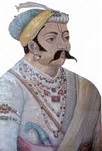






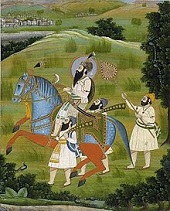
























TLW's Indiascope™ (India Historyscope) |
By T.L. Winslow (TLW), the Historyscoper™ |
© Copyright by T.L. Winslow. All Rights Reserved. |
Original Pub. Date: Sept. 7, 2016. Last Update: May 23, 2024. |












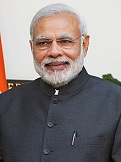
Westerners are not only known as history ignoramuses, but double dumbass history ignoramuses when it comes to India's history. Since I'm the one-and-only Historyscoper (tm), let me quickly bring you up to speed before you dive into my Master Historyscope.
In 3300 B.C.E. a Chalcolithic culture settlement in Harappa in Punjab, E Pakistan (Land of Five Rivers) (named after the Ravi River) in the Indus Valley contains evidence of connection between Indian and Sumerian cultures; a main city is Dholavira, which is abandoned then reoccupied until ca. -1450.

Talking about major religions that survived to modern times, so let's start with India, way back in the Indus Valley Bronze Age Civilization (-3300 to -1600), where India's original jackpot lotto game, Hinduism, oldest religion in the world was developed, based on Shruti (Sruti) (Sansk. "that which is heard"), with the theme that gods are a dime a dozen and they must all ultimately be one, and the goal of life is to transcend them all. About 1500 B.C.E. the Vedic Period began in India (ended -500), with major portions of the 1,028 Veda Hymns (Vedas) (Sans. "veda" = knowledge) being composed, incl. the Rig Veda (Royal Knowledge), Sama Veda (Chant Knowledge), Yajur Veda (Sacrificial Ritual Knowledge), Atharva Veda (Knowledge of Incarnations); the Universe was allegedly evolved by self-existent Brahma (Sans. "worship") (Prajapati) the Creator (part of the Hindu Trimurti or Triad) from a cosmic egg; he originally had five heads, until Siva (Sans. "auspicious") the Destroyer, god of destruction and reproduction, the 3rd member of the Hindu Trinity destroys four of them, and he becomes red and rides on a swan with his consort Saraswati ("eloquence personified"), who becomes the goddess of writing and the arts; meanwhile the 2nd member Vishnu (Sans. "all-pervader") the Preserver stabilizes everything, going on to have several human incarnations, incl. Krishna (Kistna) - where are the sex manuals? There are Six Orthodox Schools of Hinduism. The four Vedas, incl. the Samhitas ("joined") (prayers), Brahmanas (legends), Aranyakas (ritual sacrifice), and Upanishads (abstract spiritual philosophy), which describe the ultimate reality of Brahman and the form of human salvation (moksha); the Trimurti (Great Trinity) ("three forms") consists of Brahma the Creator, Vishnu the Preserver, and Shiva (Maheswara) the Destroyer, who are three manifestations of the Supreme Being called Ishvara, Bhagavan, Parameshwara, or Deva/Devi; some claim he has five forms, Ganesha, Shiva, Shakti, Vishnu, and Surya; all living creatures have an atman or soul; Hinduism split into four sects incl. Shaivism, whose devotees worship Shiva and wander about with ashen faces performing self-purification rituals, Vaishnavaism, whose devotees worship Vishnu, Shaktism, whose devotees worship Shakti or Devi the Divine Mother and perform animal sacrifice, and Smartha (Smarta), who worship all five forms and hold the Smriti ("that which is remembered") as the most authoritative texts, recognizing Brahman as the highest principle in the Universe, pervading all existence. About 2300 b.C.E. the Shiva Linga (phallic pillars) representing the Hindu deity Shiva in Shaivism are first created, often mounted inside a lipped disc-shaped platform called a yoni that symbolizes the goddess Shakti. As far back as the 8th cent. B.C.E. the Later Upanishads ("sitting down near") began to be composed (ends -400?); traditionally, 108 of them exist, varying from 1-50 printed pages in length, forming the lit. foundation of Hinduism, incl. the Brahman (universal spirit), the Atman (individual self), and the divine syllable Aum, and how the non-dual Brahman-Atman is the all inclusive ground of the Universe while all reality in the Universe is but an illusion, we won't mention sacred cows.
In 2600 B.C.E. the pop. in the Indus Valley and Sarasvati River regions begins to mushroom due to farming (ends -2000), building two large cities by -2500 at Harappa on the Indus River S of Lahore in W Punjab, Pakistan, and Mohenjo-Daro near Larkana in S Sindh, Pakistan, with public bldgs. and sanitation, leaving the sculptures Dancing Girl and Priest-King; discovered in the 1920s; too bad, starting about 2500 B.C.E. a climate change begins, causing summer monsoon rains to gradually dry up, causing the Harappa culture to abandon their cities and move to smaller villages in the Himalayan foothills by 1800 B.C.E.
The Day of the Aryans? About 1800 B.C.E. after the invention of the chariot, the white-is-right Aryan Migration (Invasion) of Indo-Iranian Medes, Persians, Parthians, Bactrians, and Arachosians from S Russia through Afghanistan into the Iranian Plateau begins (ends -850), while more Aryan tribes invade N India, setting up a white supremacist religious civilization based on several kingdoms run by rajahs, and hierarchical social classes of priests, warriors, farmers, traders, and Dravidians (dark skinned non-Aryans).
About 1500 B.C.E. the Vedic Period begins in India (ends -500), with major portions of the 1,028 Veda Hymns (Vedas) (Sans. "veda" = knowledge) being composed, incl. the Rig Veda (Royal Knowledge), Sama Veda (Chant Knowledge), Yajur Veda (Sacrificial Ritual Knowledge), Atharva Veda (Knowledge of Incarnations); the Universe was allegedly evolved by self-existent Brahma (Sans. "worship") (Prajapati) the Creator (part of the Hindu Trimurti or Triad) from a cosmic egg; he originally had five heads, until Siva (Sans. "auspicious") the Destroyer, god of destruction and reproduction, the 3rd member of the Hindu Trinity destroys four of them, and he becomes red and rides on a swan with his consort Saraswati ("eloquence personified"), who becomes the goddess of writing and the arts; meanwhile the 2nd member Vishnu (Sans. "all-pervader") the Preserver stabilizes everything, going on to have several human incarnations, incl. Krishna (Kistna) - where are the sex manuals?
About 1500 B.C.E. the Laws of Manu (Manu Smriti) are written in India by the Seventh Manu (ruler of the Earth for this age, which is the 7th Manvantara), institutionalizing the wonderful caste system; "Man is purer above the navel than below, hence the purest part is his mouth"; really written in the 2nd cent. B.C.E.? - a horse is a horse, of course, of course?
About 1500 B.C.E. indigenous iron technology arises in Dwarka and Kashmir in India.
About 1000 B.C.E. Takshashila U. is founded in Taxila ("city of cut stone") in Rawalpindi, Punjab, India, becoming the world's first university, growing to 10.5K students from India, Greece, Babylon, China, Phoenicia, Arabia, and Syria studying 68 different courses; teachers incl. Kautilya, Panini, Jivak, and Vishnu Sharma; after invading Punjab, Alexander the Great takes several scholars back with him to Greece; the Hephthalites (Hunas) destroy it ca. 460 C.E.
About 1000 B.C.E. the Kingdom of Vanga (Banga) in NE India is founded.
About 1000 B.C.E. the Late Vedic Period in India ends; by this time the Vedas, by the seven Rishis (Shining Ones) (stars of the Great Bear) are written; Sanskrit as a spoken language begins to break down over the next two cents.
In 967 B.C.E. during King Solomon of Israel's reign the first Jews arrive in India in Solomon's merchant fleet, and some settle in Cochin in S India, later being joined by Jews from Spain et al.; meanwhile a group of 14 shipwrecked Jews settle on the Konkan coast of W Maharashtra, calling themselves Bene Israel.

About 900 B.C.E. the Videha (Mithila) (Tirabhukti) Kingdom (ends -500) in the Mitila region of modern-day Bihar in N India between the Mahananda River, Ganges River, Gandaki River, and foothills of the Himalaya Mts., becomes a major political-cultural center of India along with Kuru and Pancala, becoming known for 8th-7th cent. world-renouncing philosopher king Janaka (father of Sita in the "Ramayana") , whose court became an intellectual center for sages (rishi) incl. Yajnavalkya (Yagyavikya), who coins the term Advaita (monism) and welcomes women to participate in Vedic studies; the Madhubani district of Mithila becomes known for Madhubani Art, created by women and characterized by eye-catching geometrical patterns with ritual content.
About 900 B.C.E. Rishabha (Adinatha) (First Protector) AKA Adishvara or Adeshvara (Primal Lord), the 23rd Tirthankara (ford maker) allegedly founds Jainism (Sansk. "to conquer"), the religion of not hurting a fly (non-violence and self-control), which peaks in India in the 8th cent. B.C.E., and after all the carnage is now down to 4M followers, albeit 90+% literate.
About 900 B.C.E. the Sanskrit Mahabharata, the world's longest epic poem is written in India, about the struggle between the Pandava and Kaurava families - the original Dallas, Dynasty, and Falcon Crest?

In 800 B.C.E. the Axial (Axis) Age of Karl Jaspers (1883-1969) begins (ends -200), when "the great world traditions that have continued to nourish humanity came into being: Confucianism and Daoism in China; Hinduism and Buddhism in India; monotheism in Israel; and philosophical rationalism in Greece", and where "What mattered was not what you believed but how you behaved", and the concept of kenosis (Greek for emptying), "spirituality of self-surrender" is the goal.
About 800 B.C.E. Couching (using a sharp instrument to push a cloudy lens to the bottom of the eye to cure cataract) is first described in the medical treatise "Sushruta Samhita, Uttar Tantra" by Indian surgeon Maharshi Sushutra.
In the 6th cent. B.C.E. the Sangam Period (ends 3rd cent. C.E.) begins in ancient Tamil country in S India, now known as Tamilakam, incl. modern-day Tamil Nadu, Kerala, Puducherry, Lakshadweep, S Andhra Pradesh, S Karnataka, and N Sri Lanka, speaking the Tamil language.
About 600 B.C.E. the region of Bombay on the W coast of the Indian peninsula is overrun and controlled by the Persians (until -327).
About 600 B.C.E. Sushruta (Sansk. "well-heard") of Varanasi, India becomes the first plastic surgeon and father of surgery, leaving a Compendium, containing descriptions of 1,120 illnesses, 700 medicinal plants, and detailed surgical techniques for incisions, probing, cauterization, prostate gland removal, hernia surgery, cataract surgery, Caesarian section et al.

On Apr. 12, 599 B.C.E. (13th day of the rising moon of Chaitra) Indian Lord Mahavira (Sans. "Great Hero") (Vardhamana) (d. -527), AKA Vardhamana (Sans. "increasing") (for bring prosperity to the kingdom while still in the womb) is born in Kundalpur, Vaishali (modern-day Bihar, India) as the son of King Siddartha and Queen Trishala, going on to found of Jainism, claiming to be the 24th and last Tirthankara ("fordmaker"), who founds a Jain Tirth (community) that acts as a ford across the river of human misery.

In 563 B.C.E. Indian sage Siddhartha (Sans. "siddha" + "artha" = achieved meaning), Prince Fo of the Sakya (Shakya) tribe of Kapilavastu and its Gautama (Gotama) clan (founded by Hindu philosopher Gautama is born in Lumbini, Shakya Repub. (Nepal), who goes on to write the Institutes of Gautama); he is later called the Buddha (Sans. "awake", "enlightened") (-563 to -483); before enlightenment under the Bodhi (Bo) Tree (a special old sacred fig tree of species ficus religiosa with heart-shaped leaves at the Mahabodhi Temple in Bodh Gaya, 62 mi. from Patna, Bihar, India) he is called Bodhisattva (Sans. "one destined for enlightenment").
About 515 B.C.E. (July -518?) Scylax of Caryanda, a Greek in the Persian navy is sent by Darius I to explore the coastlines of India and Egypt, spending 30 mo. and helping Darius I conquer the Indus River Valley.
In 490 B.C.E. the city of Patna (Pataliputra) on the Ganges River in NE India (modern-day pop. 1.69M/2.0M) is founded by the king of Magadha, becoming the capital of the Magadh Empire under the Haryanka, Nanda, Mauryan, Shunga, Gupta, and Patna Empires, known as a center of learning, fine arts, and astronomers incl. Aryabhata, Vatsyayana, and Chanakya, reaching 400K pop. by 300 B.C.E.; it goes on to become a pilgrimage center for Buddhists, Hindus, Jains, and Sikhs; after the fall of the Gupta Empire, it declines until it is revived in the 17th cent. by the British as a center of internat. trade; after the partition of the Bengal presidency in 1912, it becomes the capital of Bihar and Orissa Province.

In 345 B.C.E. Mahapadma Nanda (-400 to -329) ("Destroyer of all the Kshatriyas") usurps the throne of Maghada in N India from Shishunaga, and founds the Nanda Dynasty (ends -321), which becomes known for its great wealth, building a 200K-man infantry with 20K-80K cavalry, 2K-8K war chariots, and 3K-6K war elephants, extending his rule from Bengal to Punjab, and S to the Vindhya Range and the Deccan Plateau, becoming the first great empire of N India.

In 327 B.C.E. Alexander III the Great's gen. Craterus (-370 to -321), known for going lion hunting with him in the nude is given the first independent command in the Macedonian army to take on the Tapurians of Hyrcania; meanwhile late in the year Alexander invades India at the invitation of Taxiles (King Ambhi of Taxila), who wants him to fight King Porus (Parvataka), and with Roxane at his side he crosses the Hindu Kush into N India, then over the Indus River, capturing Persian-held Bombay; too bad, upon seeing the 4K well trained and equipped war elephants of the Nanda Empire, his forces mutiny at the Beas River; his dog Peritas (Gr. "January"), of the Skilos tou Alexandrou (Molosser) Mastiff breed (which has been with him since age 11) dies on a pass in India, causing Alexander to later name a city after him - it's fun to get out and meet people?

In 322 B.C.E. the Greek Money Honey out of the way, Chandragupta Maurya (Sandrocottus) (-340 to -297) overthrows the Nanda throne in Magadha in modern-day Bihar, home of Buddhism and Jainism, and next year founds the Maurya Empire in India (ends -185), going on to extend his control over most of the subcontinental mainland in the next decade; Chanakya (-350 to -283), who engineers his rise to power becomes his PM, writing the Arthashastra, a treatise on statecraft, economic policy, and military policy; Greek control of India slips slides away, but leaves a lasting imprint in Indian art (esp. sculpture) and science.
In 301 B.C.E. Chandragupta (d. -297) abdicates to become a Jainist ascetic, going on to starve himself to death, and his son Bindusara ("the Spotted One") Maurya (d. -273) becomes king #2 of the Maurya Empire in Magadha, India (until -273).
In the 3rd cent. B.C.E. the Tamil Chola Dynasty in S India is founded in the Kaveri River Valley, lasting until 1279 C.E., vying for a longevity record; also the Tamil Pandya Dynasty, and the Tamil Chera Dynasty, whose rulers becomes known as "the three crowned rulers (muventar) of Tamil country"; the Chola Dynasty spawns the Chola Nadu cultural religion, known for Shola stunted evergreen montane forests.
In the 3rd cent. B.C.E. the Bavikonda (Telugu "hill of wells") Buddhist temple is built in Andhra Pradesh, containing an alleged bone fragment from Buddha.
About 300 B.C.E. the oldest surviving copy of the Panchatantra (Five Treatises) is written, an ancient Indian collection of interrelated animal fables in Sanskrit verse and prose arranged within a frame story with the message of how princes can live a wise, good life, going on to become the most translated lit. work of India after Persian physician Burzoy (Burzoya) (Burzawayh) travels to India in 570 C.E. and returns with it, translating it under the title "Karirak ud Damanak"; source of Aesop's Fables?

In 273 B.C.E. Bindusara Maurya dies, and in 269 after killing 99 of 100 brothers, his son Ashoka (Asoka) (Sansk. "without grief") Maurya (the Great) (-304 to -232), grandson of Chandragupta becomes king #3 of the Maurya Dynasty in Magadha, India (until -232), going on to become "the greatest ruler the world has seen" (H.G. Wells), and a patron of Buddhism, producing the earliest known writings in the sacred language of Pali (Sans. "row", "line", "series") ("language of mankind's philosophy").
About 200 B.C.E. the Ajanta Caves near Bombay, India begin to be richly carved and decorated by Buddhist monks, who use them as temples (until 600 C.E.).
About 185 B.C.E. after assassinating the last Mauryan emperor Brihadratha Maura, the Shunga Empire in E-C India (ends -75) is established by Brahmanist About this year Maurya gen. Pushyamitra Shunga (-185 to -149), with capital at Pataliputra; he goes on to cruelly persecute Buddhist monks while performing numerous Ashvamedha (kill or capture my accompanied wandering horse) campaigns to legitimize his rule; the empire goes on to persecute Buddhists and give a big V to the Brahmin priests of Hinduism (named after the Indus River), who ingrain the caste system so deeply that nobody can ever get rid of it? - you stink?
About 150 B.C.E. the nomadic E Iranian-Scythian Saka people are pushed by the Yuezhi people W into Sogdiana, crossing the Syr Darya into Bactria, displacing Greeks; meanwhile more Sakas move S to NW India incl. Kashmir, Punjab, Sindh, Haryana, Gujarat, Maharashtra, Uttar Pradesh, Bihar, and Rajasthan, starting with the Indus River Valley in about -88.
About 100 B.C.E. the Indo-European Yuezhi (Yuechi) (Rouzhi) people of C Asia cross the Oxus River, break Bactrian Greek power and contract them to the Hindu Kush and the upper Indus and Swat valleys in W India, where the Sakas (Scythians) and Scytho-Parthians, heretofore retreating from them make mincemeat of them, causing them to veer S, finally settling in NW India by -40, becoming the Kushanas, reaching their peak in the 3rd cent C.E.
About 100 B.C.E. the first Chinese ships reach the E coast of India.
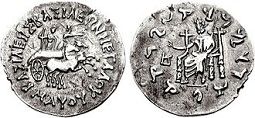
About 88 B.C.E. the E Iranian nomadic Sakas (Shakas) (displaced Scythians) come through the Bolan Pass and occupy the entire Indus River region as far E as Mathura, led by Zeus-worshiping Saka king Maues (Moga) (d. -60), who grants tolerance to Buddhism and Hinduism; he goes on to conquer Indus River cities incl. Taxila in Punjab and the Gandharas capital Pushkalavati; his queen is Machene.
In 75 B.C.E. Vasudeva (d. -66), minister of last Shunga ruler (since -83) Devabhuti assassinates him, ending the Shunga Dynasty (begun -185) and founding the Kanva Dynasty (ends -30) after disguising a daughter of his slave woman as his queen to claim the throne, ruling from Magadha in E India while minting coins in Vidisha in C India; Vasudeva goes on to become a patron of the arts; he is succeeded by Bhumimitra (-66 to -52), Narayana (-52 to -40), and Susarman (-40 to -30).

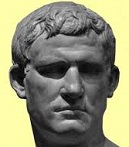

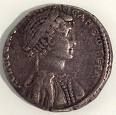

16 big game days, 2 superheroes, one very special family room? In summer 30 B.C.E. Julius Caesar's chosen heir Octavian (Gaius Octavius) (-63 to 14) marches his armies around the Aegean, through Asia Minor and into Egypt; in July Marc Antony (b. -83) defends Alexandria from Octavian's Gen. Marcus Agrippa (-63 to -12), but his men desert, he is told that Cleopatra is dead, and falls on his own sword; on Aug. 1 Octavian captures Alexandria, and annexes Egypt as the Roman Province of Egypt (ends 641 C.E.); the Roman V gives them direct access to the Malabar Coast in India, allowing them to begin importing precious black pepper; on Aug. 12 aging 39-y.-o. Cleopatra VII (b. -69), after trying unsuccessfully to pussy-whip Octavian and negotiate to keep her Ptolemaic kingdom intact and keep her kids, only to learn that she is to be brought to Rome in chains as a common POW commits suicide at age 39 in Alexandria with an asp (Egyptian cobra) in a fig basket, becoming Egypt's last pharaoh; William Shakespeare never calls it an asp, preferring the term "pretty worm of Nilus" in Antony and Cleopatra, Act 5 Scene 2: "Poor venomous fool, be angry, and dispatch"; Cleopatra's servant Charmion (Charmian) greets some messengers, who ask, "Was this well done of your lady?", answering "It is well done, and fitting for a princess/ Descended of so many royal kings", as portrayed by Isabelle Cooley in the 1963 film Cleopatra, with the line: "Extremely well, as befitting the last of so many noble rulers" - don't have to live like a refugee?
In 30 B.C.E. Kanva Dynasty king (last) (since -40) Susarman is killed by Balipuccha, who founds the Andhra (Satavahana) Dynasty in the Deccans of India incl. modern-day Andhra Pradesh, Maharashtra, and Telangana, going on to expand to parts of modern-day Gujarat, Karnataka, and Madhya Pradesh while fighting off the Saka Western Satraps et al.; capitals incl. Pratisthana (Paithan) and Amaravati (Dharanikota); Brahmanism and Buddhism are both supported, along with Prakrit lit.; coins bear images of the rulers; the dynasty forms a culture bridge to the S tip of India; the dynasty fragments by the early 3rd cent. C.E.
In 27 B.C.E. the Andhra Dynasty conquers the Sunga Dynasty of Magadaha, extending from S to C India, vying with the Sakas for control of the Deccan.
In 26 B.C.E. the first Indian ambassador from the Tamil Pandyan Dynasty in S India is sent to Rome.
In 14 C.E. during Roman Emperor Tiberius' reign Alexandria-born Greek philosopher Apollonius the Sophist writes Homeric Lexicon, the first Greek lexicon, mentioned by 10th cent. Greek lexicographer Suidas; Philostratus claims that Apollonius attended a feast in India where he saw "cup-bearers of dark bronze resembling the figures of Ganymede or of Pelops among the Greeks" (androids?).
In 40-70 C.E. (59-62?) The Periplus (Gr. "sailing around") of the Erythraean Sea: Travel and Trade in the Indian Ocean is written in India by an anon. merchant, describing sailing routes from Egypt through the Red Sea along NE Africa, plus SW India and the Sindh of Pakistan.

In 45 C.E. Heraus dies, and his son Kujula Kadphises (-4 to 80) becomes king of the Kushanas (Kueh Shen), one of the five tribes of the Yueh-Chi of China who crossed the Himalayas in -176 and settled in Bactria, going on to unite the Yuezhi Confederation.
In 50 C.E. is the traditional date of the arrival of St. Thomas the Apostle (-72) (an Indian, always portrayed as dark?) in India after establishing Christian churches in Mesopotamia and Persia; the Assyrians, who had scattered across the Middle East over the last 6 cents. embrace Christianity, and found the Ancient Church of the East in Iraq.
In 70 C.E. Buddhist Western Kshatrapa satrap Bhumaka (-119) establishes Scythian power on the NW coast of the Deccan in India, becoming the father of Nahapana.
In 78 C.E. Kujula Kadphises overwhelms the Saka-Pahlava princes of the Hindu Kush, and founds the Kushan Empire in Bactria, Afghanistan, and India (ends 375).

In 78 C.E. Chashtana (Tiastanes) (Tisman), son of Bhumaka founds the Saka Dynasty of western satraps in NW India based in Ujjain in Malwa, India (ends 395).
In 109 C.E. Nahapana ruler (since 106) Gautamiputra Yajna Satakarni (d. 130 conquers Surashtra in the Deccan Plateau of India from the Vindhyas to Banavasi.
In 119 C.E. Nahapana (Mambanos) (-124) rules over Surashtra (Kathiawar) and the adjacent coast of India with capital at Junnar E of Bombay.

In 135 C.E. the Romans under troubleshooter gen. Sextus Julius Severus (gov. of Britain in 131-3) put down the pesky Bar Kokhba Revolt (begun 132); the Jews' butts are kicked bigtime, and 580K are killed (half the pop.), 985 towns and villages are destroyed, and Jerusalem is plowed with oxen; Hadrian issues an edict ordering the Jews expelled from Israel (only permitted to enter Jerusalem once a year), completing the Jewish Diaspora (Heb. "Tefutzah" = scattered), the dispersion of the pesky oddball square-peg-in-a-round-hole Jews throughout the Roman Empire; Judea is renamed Syria-Palestina (coined by Herodotus), and the way is now clear for the spreading of the name Jah-Zeus (Jehovah-Zeus) (Jesus) by the empire-wide Catholic (universal, as in get all the pagans to join the Church no matter how much the original faith has to be diluted) conspiracy, when his real name was Yeshua, and being too Jewish it's now un-PC; the whole Jesus fable was invented at this point to get even with the Romans, with the destruction of the Jewish Temple in 70 C.E. used as a blind screen so that later historyscopers would scope in vain 60 years too early?; Rabbi Akiva ben Joseph (50-135) is executed by the Romans after teaching the Torah in public after the revolt; the Ebionites (Heb. "ebyon" = poor) sect of Jewish Christians who deny the divinity of Christ and consider St. Paul an apostate for declaring the supremacy of Christian teaching over the Mosaic Law heads W across the Jordan River into Peraea (modern-day Jordan), isolating themselves from the main body of Christians and adopting a conservative Pharisaic creed that evolves into a combo of Christianity, Gnosticism and Essenism, and split into groups who believe or reject the Virgin Birth; they die out by the 5th cent.; in 1960-1 Yigael Yadin (1917-84) excavates the Cave of Letters in the desert W of the Dead Sea, discovering a basket at the bottom of a privy containing 19 bronze items, which are housed in the Shrine of the Book near Givat Ram in W Jerusalem, incl. a patera (libation dish) with an engraving of the Greek-Roman goddess Thetis, mother of Achilles, causing speculation as to whether these are sacred objects from the Temple of Jehovah (destroyed 70); a purse containing the 35 Papers of Babatha, a woman who owned a date orchard in En-Geddi on the W shore of the Dead Sea is found, incl. dated orders by Bar Kokhba, showing him as a meany who threatened and ordered the arrest of fellow Jews; comparison of C-14 dates causes Magen Broshi to propose Broshi's Law that the oldest extreme of the C-14 date range is the most accurate; bones of starved women and children are later found, along with remnants of a Roman army outpost on top of the mountain; Cochin (Malabar) in SW India becomes a haven for Jews until modern times; the Diaspora didn't really happen, and modern Muslim Palestinians are their descendants?
About 150 C.E. (150-250) Buddhist philosopher Nagarjuna founds the Madhyamika (Sans. "Middle Way") (Mahayana Buddhism) school in India.
In 179 C.E. converted Greek Stoic philosopher St. Pantaenus the Philosopher (-200) of Alexandria visits India and meets Christians there, returning to found the Catechical School of Alexandria (AKA the Didascalium); his most famous student and successor is Clement of Alexandria (Titus Flavius Clements) (150-215), "the Sicilian bee".
In 210 C.E. Vasudeva I dies, and Kanishka II (-230) becomes king of Kushan in N India (until 230).
In 224-383 C.E. the Bakhshali Manuscript, written on birch bark near the village of Bakhshali, India (modern-day Madan, Pakistan) contains the first known use of the zero symbol, a black dot; discovered in 1881.
About 234 C.E. the Andhra Dynasty in India (begun in 27 B.C.E.) disintegrates.
In 275 C.E. Kanishka III dies, and Vaskushana (-290) becomes king of Kushan (until 290).
In 275 C.E. the Pallava Dynasty (ends 897 C.E.) is founded on the ruins of the 1st cent. B.C.E. Satavahana Dynasty by former feudatories.
In the 4th cent. C.E. sericulture (silk production) spreads to India.
In the 4th cent. (5th?) C.E. Indian Sanskrit poet-dramatist ("the Shakespeare of India") Kalidasa flourishes, writing the plays The Recognition of Shakuntala (Sakuntala), or the Lost Ring, Malavika and Agnimitra, and Pertaining to Vikrama and Urvashi, the epic poems Dynasty of Raghu and Birth of Kumara, and the lyric poems Cloud Messenger and The Exposition of the Seasons.
About 300 C.E. Hastivarman I of Vengi founds the Brahmin Salankayana Dynasty in Vengi, E India (ends 440).

In 320 C.E. Magadha rajah Chandragupta I (305-30) founds the Gupta ("governor") Empire (Dynasty), uniting N India after five cents. (until 543); he rules from Pataliputra (Patna); the Artha Sastra (Treatise on Material Gain) is written early in this cent. to teach a prince how to rule by the Machiavellian "end justifies the means" method; the Kama Sutra (Pleasure Treatise) (Laws of Love) is written by Vatsyayana Mallanaga during this dynasty - dial my time machine to this year?

In 375 C.E. Samudragupta dies, and by 379 his son Chandragupta II Vikramaditya (-415) becomes king of the Gupta Dynasty in N India (until 415), going on to vastly expand the kingdom and subjugate all of the Indian subcontinent N of the Narbada River, bringing a golden age of peace, prosperty, and intellectual accomplishment, with Hinduism reversing its decline through absorption of features of Buddhism. In this half-cent. the rustless 6-ton 23-ft. Iron Pillar of Delhi is built in Delhi, India by Chandragupta II, and dedicated to Vishnu.
In 388 C.E. Chandragupta II begins the conquest of Malwa, Gujarat, and Surashtra, ending the satrapy of Ujjain by 401; he moves his capital from Pataliputra to Ayodhya in Awadh, then to Kausambi on the Jumna River.

In 455 C.E. Kumaragupta I dies, and Skandagupta (-467) becomes ruler of the Gupta Dynasty of N India (until 467), repulsing the White Huns.
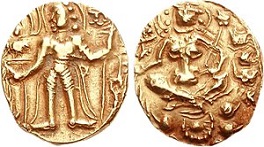
In 476 C.E. Budhagupta (-495) becomes emperor #11 of the Gupta Dynasty in N India (until 476), ruling from N Bengal to E Malwa or Surashtra.

In 499 C.E. Hindu superbrain Aryabhata (476-550) writes the Sanskrit verse Aryabhatiya, divided into 4 parts: "Celestial Harmonies", "Elements of Calculation", "On Time and its Measures", and "Spheres"; Aryabhata advances the theory that the Earth rotates on its axis, gives the correct explanation for eclipses of the Sun and Moon, the value of pi as 3.1416, and solves the quadratic equation with the first known use of algebra; "The Moon consists of water, the Sun of fire, the Earth of earth, and the Earth's shadow of darkness. The Moon obscures the Sun and the great shadow of the Earth obscures the Moon"; too bad there's nobody left in the Ever-Saved West who cares enough to say goodbye or hello?; in 629 Hindu mathematician Bhaskara I (600-80) writes a verse commentary, first using the decimal number system and making it known to Indian scholars.
In the 6th cent. C.E. algebra and the decimal system are developed in India and Mesopotamia.
In the 6th cent. C.E. the game of Chaturanga (Chatrang), a predecessor of chess begins to spread in India.
In 528 C.E. Hephthalite (White Hun) chief ("the Attila of India") Mihiragula (510-40) is overthrown by his Indian tributary princes.
In 543 C.E. the Gupta Empire in India (begun 320) ends.
About 550 C.E. the Maukhari Dynasty (ends 606) is founded in Kannauj in NW India by former vassals of the Guptas, ruling over modern-day Magadha and Uttar Pradesh.
In 565 C.E. the central camp of the Ephthalites (White Huns) on the Oxus River is destroyed by the Turks allied with the Persians, and they disintegrate; some of the Rajput clans of Rajputana in N India descend from them.
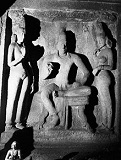
In 575 C.E. Simhavishnu (Avanisimha) (-600) defeats the Kalabhras and reestablishes the Pallava Kingdom.
In the 7th cent. C.E. the first records are kept of pilgrimages to Benares (Benaras), the holiest city of India on the N bank of the Ganges River 400 mi. WNW of Calcutta, where pilgrims bathe themselves from the ghats (terraced landings) to cleanse their sins; dying on the banks of the river allegedly brings salvation; the level portions of the ghats are used for funeral pyres; the city eventually houses 1K temples, incl. the holiest of all, the Bisheshwar (Golden Temple).
In the 7th cent. C.E. the black Hindu goddess Kali ("black") is first mentioned as a distinct entity as the goddess of time as in the appointed time for death, becoming the favorite of the Thuggee ("scoundrel") cult.
In the 7th cent. C.E. the Hindustani language begins developing in N India from Sanskrit, absorbing Muslim influence and ultimately splitting into the parallel Urdu form.
In 600 C.E. Simhavishnu dies, and his son Mahendravarman I (-630) becomes Pallava king of Tamil Nadu, India (until 630), going on to expand the kingdom to Telugu and N Tamil, promoting the Jain faith, letters, and stone architecture while withstanding an attack by Chalukya King Pulakeshin II of Badami in the N and fighting a series of wars against the Tamil kingdoms of Chola and Panyas in the S and another in N Vengi, losing his N provinces to Pulakeshin.
About 600 C.E. Grahavarman succeeds his father Avantivarman as king of the Maukhari Dynasty in Kannauj in N India, allying with the Thanesar via marriage with Rajyashri, daughter of King Prabhakar Vardhana to fight the Malavas, causing Gauda king Shashanka in Bengal to ally with the Malavas to counter it, launching a surprise attack on Kannauj in 605, killing Grahavarman and imprisoning Rajyashri, ending the Maukhari Dynasty (founded 550).

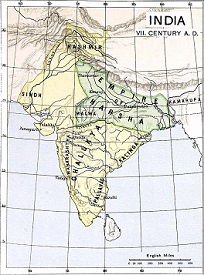
In 606 C.E. Harsha (Harshavardhana) (590-647) becomes emperor of the Vardhana (Pushyabhuti) (Pushpabhuti) Dynasty in N India (until 647), embracing Buddhism and becoming the last major Hindu monarch, going on to conquer most of the mainland except the Deccan, and revive stone sculpture and architecture; his empire encompasses N and NW India, extending E to Kamarupta and S to the Narmada River, with Kannauj in modern-day Uttar Pradesh as capital; his court becomes a cosmopolitan center for scholars and artists incl. Xuanzang.

In 629 C.E. Chinese Buddhist monk Xuanzang (Hiuen Tsang) (Tang Sanzhang) (602-63) defies an imperial edict forbidding foreign travel, and escapes from the capital of Sian-fu (Signan) on a 16/17-year journey to India (Cambodia) to fetch Buddhist scriptures (ends 1645); he is entertained by N Indian emperor Harshavardhana; his journey is recorded in the Great Tang Records on the Western Regions (646), which inspires the 16th cent. Ming Dynasty novel Journey to the West by Wu Cheng'en.
In 647 C.E. N Indian emperor (since 606) Harshavardhana dies without heirs, causing a power grab in Kannauj, with Arunasva the winner; too bad, he attacks Chinese Tang emperor Tai-sung's ambassador Wang Hstian-tse, who takes him POW back to China.
In 711 C.E. 17-y.-o. Arab Syrian gen. Muhammad ibn Kasim (Qasim) al-Thaqafi (695-715) invades Sindh (in modern-day Pakistan) on the lower Indus River delta, defeating Hindu ruler Raja Dahir Sen (661-712), setting up a kingdom that rules until 1026, causing the Sindh province to be called Bab-e-Islam (Gateway to Islam).
In 730 C.E. after a period of anarchy, Yashovarman (Yasovarman) becomes king of Kannauj (Kanyakubja), going on to invade Gauda (Bengal) and kill the king; he is succeeded until the 820s by weak Ayudha kings Vijrayudha, Indrayudha, and Chakrayudha, sparking the Tripartite Struggle in N India between the Pala Empire in the NE, the Gurjara-Pratihara Empire in the NW, and the Rashtrakuta Empire in the SW (ends 805).
In 730 C.E. Nagabhata I (-756) of Mandor conquers Malwa as far as Gallor and the port of Bharuch in Gujarat, founding the Gurjara-Pratihara Dynasty (ends 1036), with capital in Avanti (Malava) in Malwa in modern-day Madhya Pradesh, later Uljain, going on the fight off the Arabs of Sind, defeating them in battle in 738 before being defeated by Rashtrakuta king Dantidurga; the dynasty goes on to become the main obstacle to Muslim takeover of India E of the Indus River, which takes until 1192.
In 731 C.E. an Arab army invades the territory of the Chalukyas in W-C India, and is repulsed.
In 750 C.E. the earliest mention of Jews in Cochin in SW India.
In 753 C.E. Dantidurga (Dantivarman) (-756), feudatory of the Badami Chalukyas defeats their king Kirtivarman II, founding the Jainist Rashtrakuta (Sansk. "rashtra" + "kuta" = country + chieftain) Dynasty in C-W India (ends 982), with capital in Manapura, incl. modern-day Indian states Karnataka, Tamil Nadu, Andhra Pradesh, Telangana, Maharashtra, and Gujarat, spreading the Kannada language along with Jainism, and creating the Karnata Dravida style of architecture incl. the Kailasa Temple of Ellora.
In 756 C.E. Dantidurga dies without an heir, and is succeeded by his uncle Krishna I (-774) as emperor #2 of the Rashtrakuta Dynasty in India (until 774), finishing off the Badami Chalukyas next year by defeating their ruler Kirtivarman II and ending their dynasty, and going on to conquer the Western Gangas under their king Sripurusha, the Shilaharas of South Konkan incl. the Vengi, and the Eastern Chalukyas under their ruler Vishnuvardhana IV, and build the Kalaisa Temple at Ellora.

In 760 C.E. the rock-cut Brahman Kailasanatha(r) (Kalaisa) (Kalaish) Temple in Ellora, Hyderabad (modern-day Maharashtra), India is begun by Krishna I Rashtrakuta, king of Malkhed (finished 783), with cool stone elephants; there are eventually 18 other large Brahman and Buddhist rock cave temples in Ellora; they were carved out of one rock from the top down.
In 774 C.E. Krishna I dies, and his eldest son Govinda II (-780) becomes emperor #3 of the Rashtrakuta Empire (until 780), indulging in sensual pleasures while leaving the admin. to his younger brother Dhruva Dharavarsha (-793), who expands the empire to three times as big.
In 780 C.E. unpopular ruler Govinda II dies, and his younger brother Dhruva Dharavarsha becomes emperor #4 of the Rashtrakuta Empire (until 793).
In 780 C.E. Vatsaraja (Vasraja) (-800), grand-nephew of Nagabhata I becomes king #3 of the Gurjara-Pratihara Dynasty (until 800), becoming the first to win Vs over Kannauj and Bengal, forging the Pratihara empire.

In 788 C.E. Indian Hindu philosopher-theologian Adi Shankara (Sankara) Charya (788-820) is born on the banks of the Periyar River in Kaladi (modern-day Kochi, Kerala), going on to consolidate the doctrine of Advaita Vedanta (Sansk. "not two") (originally Purusavada), the idea that the true self (Atman) is the same as the highest metaphysical reality (Brahman).
In 793 C.E. popular ruler Dhruva Dharavarsha dies, and his son Govinda III (-814) becomes emperor #5 of the Rashtrakuta Empire (until 814); his chief queen is Gamundabbe.
In 805 C.E. Nagabhata II (-833) becomes king #4 of the Gurjara-Pratihara Dynasty (until 833), going on to defeat the rulers of Andhra, Vidarbha, Kalinga, Matsyas, Vatsas, Saomdjava, W Saurashtra, and Chakrayudh at Kannauj, also the Turks; too bad, he is defeated by Rashtrakuta emperor Govinda III, losing Malwa and Gujarat, then recovers Malwa and conquers Kannauj and the Ganges Plain as far as Bihar from the Palas while checking Muslim attacks in the W, making Kannauj (Kanauj) (Kanyakubja) (Mahodaya) (Cannodge) in N India ("perfume capital of India") his capital for nearly 3 cents., ending the Tripartite Struggle in India (begun 7th cent.).
In 814 C.E. Govinda III dies, and in 815 his son Amoghavarsha I (Amoghavarsha Nrupathunga I) (-878) becomes the emperor #6 of the Rashakutra Empire in India (until 878), moving the capital from Mayurkhandi to Manyakheta in modern-day Karnataka, dedicated to Indra, permitting Muslims to build mosques and earning the title "Ashoka of the South", becoming the greatest Rashakutra emperor.
In 878 C.E. Amoghavarsha I dies, and his son Krishna II (Kannara) (-914) becomes emperor #7 of the Rashtrakuta Empire (until 914); his queen is Chedi Haihaya princess Mahadevi.
In 880 C.E. after defeating and killing Varagunavarman II, Aparajita Varman (-897) becomes the last king of the Pallava Dynasty (until 897).
In 897 C.E. Aparajita Varman is KIA in a battle against Chola king (since 870) Aditya I (-907), ending the Pallava Dynasty based in Tondaimandalam (founded 275).

In 900 C.E. the Gurjara-Pratihara Empire stretches across N India.

About 900 C.E. Indian mathematician Sridhara (870-930) discovers the power of the zero (suro) ("seed") ("circle") (the Sun divinity incarnate?) - are you the fat one in the family?
In 914 C.E. Krishna II dies, and Krishna I's grandson Indra III (-929) becomes emperor #8 of the Rashakutra Empire (until 929) after his father Jagattunga meets an early death; his queen is Kalachuri princess Vjamba.
In 929 C.E. Indra III dies, and his son Amoghavarsha II (-930) becomes emperor #9 of the Rashakutra Empire; too bad, next year he is assassinated and succeeded by his brother Govinda IV (-935), who becomes emperor #10 of the Rashakutra Empire (until 935), becoming unpopular for his licentiousness, losing Kannauj and suffering defeats by the Chalukyas of Vengi.
In 935 C.E. feudatory King Arikesari of Vemulavada in Andhra leads a revolt against Govinda IV, overthrowing him and placing Indra III's aged younger brother (Govinda IV's uncle) Amoghavarsha III (Baddiga) (-939) on the throne as emperor #11 of the Rashakutra Empire (until 939); Govinda IV flees to the protection of the Cholas of Kanchi.
In 936 C.E. is the traditional date of the arrival in India of the first Zoroastrian Parsees from Persia.
In 939 C.E. Amoghavarsha III dies after leaving admin. of his empire to his son Krishna III (Kannara) (-967), who becomes emperor #12 of the Rashakutra Empire (until 967), becoming its last able ruler and great warrior, rebuilding the empire, expanding it from the Narmada River in the N to the Kaveri River Delta in the S; the Shilahara king of Thana issues a copper grant that claims that the Rashakutra Empire controls the territory from the Himalayas in the N to Ceylon in the S, and from the eastern to the western seas; when he mobilizes his armies, the kings of Andhra, Bengal, Chola, and Pandya quiver? during his reign Indian Jainist Kannada-Sanskrit language poet Ponna flourishes in his court.
In 967 C.E. Krishna III dies, and his son Khottiga (-972) becomes emperor #13 of the Rashakutra Empire (until 972), seeing the empire begin its decline, getting KIA fighting Paramara King Siyaka III after he plunders Manyakheta.
In 972 C.E. Khottiga dies, and his nephew Karka II (-973) becomes emperor #14 of the Rashakutra Empire, scoring military Vs against the Cholas, Gujaras, Pandyas, and Pallavas; too bad, Chalukya Tailapa II declares independence and kills him after ruling only a few months.
In 973 C.E. Karka II is KIA, and Indra IV (-982) (nephew of the feudatory king of the Western Ganga Dynasty of Talakad) becomes emperor #15 (last) of the Rashakutra Empire (until 982).
In 982 C.E. after his empire shrinks to nothing, Indra IV commits suicide by Jainist sallekhana (self-starvation), ending the Rashakutra Empire of Manyakheta (founded 753), after which several related families split the empire up, spawning the Rajasthan kingdom et al.

In 998 C.E. Mahmud of Ghazni (Ghazna) (Mahmud-i Zabuli) (Yamin ud-Dawla Abul-Qasim Mahmud ibn Sebuktegin) (971-1030) becomes the first independent ruler of the Ghaznavid Dynasty (until Apr. 30, 1030), the first to claim the Abbasid title of sultan ("authority"), going on to run a highly Persianized court in his capital of Ghazni in W Afghanistan, which almost rivals Baghdad; he goes on to extend his kingdom from NW Iran to the Punjab in India, Khwarazm in Transoxiana, and Makran in the Gulf of Oman.
In the 11th cent. C.E. a calendar with a 360-day year divided into 12 mo. of 27-28 days, with an extra month added at regular intervals is introduced in India.
In the 11th cent. C.E. Gregorian monk Euthymios writes The Legend of Barlaam and Josaphat, about Christian saints who allegedly lived in India in the 3rd or 4th cent. C.E. but is really a ripoff of the story of Buddha; it gets mistakenly attributed to 7th cent. writer John of Damascus.
About 1000 Indian Hindu Shaivist sage Abhinavagupta (Sansk. "authoritative") (950-1016) (950-1016?) flourishes in Kashmir, originating the theory of rasa (vital juice or sap) in his masterpiece Tantraloka (Sansk. "Light on Tantra"), which synthesizes the 64 monistic agamas (traditions).
About 1000 Arabic speakers in India change the pronunciation of the word "Sinhu" (people living E of the Indus River) to "Hindu".
In 1000 India's share of global GDP: 28.9%, sliding to 24.4% in 1700, 16.1% in 1820, and 4.2% in 1950, rising to 7.1% in 2015.
In 1000 Mahmud of Ghazni launches the first of 17 Expeditions into India across the Afghan frontier, kicking Indian butt, stealing everything that isn't nailed down (and that too), and slowly turning the Punjab region into a dependency while forcing conversion to Muslim or enslaving millions; by 1525 as many as 60M-80M are killed by Muslim invaders and rulers.
In 1004 Rajaraja Chola I of S India finishes conquering Ceylon (Sri Lanka), funneling Singhalese revenues to his baroque Dravidian Great Pagoda of Rajarajesvara in Tanjore, and endowing a Buddhist monastery in Negapatam built by a king of Sumatra (Srivijaya).
In 1006 Muslims settle in NW India - where the Hindus welcome the Religion of Peace?
In 1014 Rajaraja I dies, and his son Rajendra Chola I (-1044) becomes king of the Chola dynasty in S India, launching another invasion of Ceylon (ends 1017) and extending the empire to the banks of the Ganges River in N India and across the Indian Ocean to SE Asia, exacting tribute from Thailand and Cambodia.

In 1016 Indian Buddhist master (Mahasiddha) Naropa (d. 1100) is born, becoming the disciple of Tilopa and pupil-partner of Niguma, and attaining enlightenment in one lifetima via his trust and devotion to his teacher and becoming part of the Golden Garland of the Kagyu School of Tibetan Buddhism, collating the Six Dharmas (Yogas) of Naropa, which he conveys to his student Marpa Lotsawa (the Translator) (Marpa Chokyi Lodro) (1012-97), helping others achieve Buddhahood in an accelerated manner.
In 1018 the Muslims invade India; the sacred Indian city of Muttra (Mathura) in Uttar Pradesh (31 N of Agra and 90 mi. SE of Delhi) (birthplace of Krishna) is pillaged by Mahmud of Ghazni - don't touch my muttra?
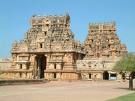
In 1018 the Brihadisvara (Bridadisvara) Rasvamin Temple in Tangore, India is built.
In 1020 Kandariya Mahadeva Temple ("Great God of the Cave") in Khajuraho, Madhya Pradesh, India is completed by King Vidhyadhara of the Chandela Dynasty.
In 1024 Rajendra Chola I, ruler of the Chola Dynasty in S India invades and conquers Bengal, establishing a new capital near Trichinopoly and building a navy.
In 1025 Mahmud of Ghazni conquers the fabulously wealthy port city of Somnath in Prabhasa, Gujarat, India capturing the Somnath Temple after 50K faithful die trying to defend it, then personally hammering the golden lingam (phallus) to pieces, having the temple's stones carted back to Ghazni for use as the steps to his Jama Masjid (Friday Mosque).
In 1026 is the first year of the Kala Chakra time system of Tibet, which synchs up with the Indian system this year.
In 1026 the Hoysala Empire in S India in modern-day Karnataka is founded (ends 1343), with capital at Belur, replacing the Sanskrit language with Kannada, and building many temples. Richard of St. Vaast leads a large pilgrimage to Jerusalem, anticipating the end of the world in 1033. Canute makes a pilgrimage to Rome (until 1026), sending his subjects a
In 1029 the Buyid capital of Rayy in W Persia falls to Mahmud of Ghazni - don't call my Rayy, call me Buyay?
In the 1030s Rajendra Chola I of S India sends his navy to exact tribute from Pegu, Malaiyur (Malay Peninsula), and the Srivijaya Empire.
On Apr. 30, 1030 Sultan Mahmud of Ghazni (b. 971) dies after conquering 680K sq. mi. in the Near East from the Indian Ocean N to the Amu Darya River, and from the Tigris River E to the Ganges River; the Ghaznavid Empire in Afghanistan begins to disintegrate.

In 1030 after leaving Ghazni for India in 1017, Persian Shiite polymath scholar Abu Rayan Muhammad ibn Ahmad al-Biruni (973-1051) writes his masterpiece History of India (Kitab Tarikh al-Hind), which waxes lyrical about the Bhagavad Gita, becoming known as "the Father of Indology"; after uttering the soundbyte: "India has produced no Socrates; no logical method has there expelled fantasy from science", for funners he translates Euclid and Ptolemy into Sanskrit. In 1051 he dies in Ghazni, modern-day Afghanistan, leaving Kitab al-Athar al-Baikya, Kitab Tarikh al-Hind (History of India), Kitab at-Tafhim (Elements of Astrology), Kitab al-Qanun al-Mas'udi (The Mas'udi Canon) (major work on astronomy), and Kitab as-Saydalah (treatise on medical drugs), which uses Archimedes' Principle to calculate specific gravity; claims that the Earth rotates on its axis as well as around the Sun, but that the data can be equally well explained by the reverse hypothesis; speculates that the Indus Valley was once at the bottom of the sea; explains the working of artesian wells by the hydrostatic principle.
In 1040 Jayasimha II (b. 1015) dies, and his son Somesvara I (1042-68) becomes king of Western Chalukya in S India, founding the city of Kalyani (modern-day Basavakalyana) as his capital.

On Aug. 11, 1044 Anawrahta Minsaw (1014-77), a Hinayana Buddhist usurps the throne of Pagan (founded 849) (until Apr. 11, 1077, uniting the entire Irrawaddy River Valley and founding the Pagan Empire (Dynasty) (ends 1297), going on to introduce his people to Theravada Buddhism, expand his kingdom while fighting off the Hindu Khmer Empire and make it the political-religious-cultural center of Burma, developing the written Burmese language, translating Buddhist scriptures, and building great monuments inspired by Ceylon and S India.

In 1044 King (since 1014) Rajendra Chola I dies, and his son Rajadhiraja Chola I (1018-52) becomes Chola king of S India (until 1052).
In the 1050s the white marble Jain temples on Mount Abu in Rajasthan, W India are built.
In 1052 Chola Rajadhiraja I of S India is KIA in a battle in the Battle of Koppam against Chalukya Somesvara I of Kalyani.
In 1062 Chola Virarajendra (-1070) defeats the Chalukyas of Kalyani in S India, and founds a vedic college and hospital.

In 1066 Indian mathematician-astronomer Sripati (b. 1019) dies, leaving Dhikotidakarana (1039), a book on solar and lunar eclipses, and Dhruvamanasa (1056) on calculation of planetary longitudes, eclipses, and planetary transits; he also leaves Siddhantasekhara, about arithmetic, algebra, and calculations on the sphere, and Jyotisaratnamala, Jatakapaddhati (Sripatipaddhatih), and Daivajnavallabha, books on astrology.
In 1068 Chalukya Somesvara I of Kalyani drowns himself during Jain rites in the sacred Tungabhadra River in S India.
In 1070 Chola Virarajendra dies, and his two sons vie for the throne of Kalyani in India (until 1074).

In 1073 the Dravidian Airava Tesh Vara Temple in Darasuram, India is begun.
In 1076 Vikramaditya VI (-1126) becomes king of Kalyani (Western Chalukya) in S India (until 1126), marrying the daughter of Chola Virarajendra and presiding over the final extinction of Buddhism by Hindus.

In 1076 Anantavarman Chodaganga (Codaganga) (-1150) creates the Eastern Ganga Dynasty (ends 1434) in the S part of Kalinga, India, stretching from the Ganges River to the Godavari River, and builds the Temple of Jagannath (Vishnu) in Puri (S of Cuttack); it is initially open to all Hindu castes, then barred to 15 of them.
In the 12th cent. the Romani (Romany) (Roma) (Gypsy) people from NW India reach the Balkans.
In 1102 the Kingdom of Cochin in SW India is founded (ends 1949), becoming known for its spice-trading capital city of Kochi, "Queen of the Arabian Sea".
About 1116 Bittideva Vishnuvardhana (-1152), a viceroy who was converted from Jainism to Vishnu by Ramanuja as a refugee from Saiva persecution by the Cholas, conquers the Chola territories of Gangavada, becoming king of his own Hoysala Kingdom in modern-day Karnataka, S India (ends 1343) based in Belur and Halebid, comprising Mysore, Salem, Coimbatore, Bellary, and Dharwar, going on to build ornate Hindu temples.
In 1125 Bilhana of Kashmir writes Vikramankacharita in praise of his host Vikramaditya VI of Kalyani, who gives him a blue parasol and an elephant.
In 1126 Western Chalukya king (since 1076) Vikramaditya VI (b. ?) of Kalyani in S India dies, after which the Cholas begin slowly encroaching on Vengi.
In 1151 Jagadhekamalla II dies, and Tailapa III (-1162) becomes king of Kalyani (Western Chalukya) in S India, presiding over the end of his empire.
In 1155 Taila III dies, and his son Someshvara IV (1183-1200) becomes Chalukya king of Kalyani in India, but is revolted against by a gen., who is assassinated by Basava (Basavanna) (1105-68), who goes on to found the Lingayat Sect of fanatical anti-Brahman phallic Siva worshipers, promising its adherents social equality; Someshvara IV waits in the wings (until 1183).
In 1157 Kalachuri Bijala II captures the Western Chalukya capital of Kalyani, causing Tailapa III to flee to Annigerii before being KIA by Hoysala Viranarasimha in 1162.
In 1160-73 Tudela, Navarre, Spain-born Jewish world traveler Benjamin of Tudela (1130-73) travels to India via Rome, Constantinople, Antioch, Palestine, Damascus, Baghdad, and Persia, and later returns via the Indian Ocean, Red Sea, Egypt, Sicily, and Italy, writing a travel book that becomes a hit with Jews until modern times, beating Marco Polo by a cent.
In 1163 the Kakatiya Dynasty is founded in E India at Kakati and/or Warangal between the Godavari and Kistna Rivers (ends 1323).
About 1165 a forged letter allegedly by Prester John circulates throughout Europe, addressed to Byzantine Emperor Manuel, and refering to its author as the ruler of India and Lord of Lords.
In 1168 Parakramabahu I of Ceylon repels a Tamil invasion from India.

In 1173 Alauddin Hussain dies, and his Persian-speaking son Mohammed (Muhammad) of Ghor (1162-1206) becomes ruler of the Ghurid Dynasty in C Afghanistan and gov. of Ghazni, going on to become the real founder of Muslim power in India.
In 1175 Mohammed of Ghor begins a campaign of conquest in India, going on to subjugate and Islamize the entire Ganges plain W of Benares by his death in 1206.
On Sept. 27, 1177 Pope Alexander III writes a letter to Prester John to be delivered by his physician Philip to the rumored Indian Christian king, the "Illustrious and Magnificent King of the Indies", giving him permission to build a shrine in Rome and join the Church; the letter carrier never returns.
In 1183 Somesvara IV, son of Taila III regains control of Kalyani in E India (until 1189).
In 1187 the Ghaznavid lands in the Punjab are conquered by Mohammed of Ghor (1173-1206) in C Afghanistan, ending the Ghaznavid Dynasty (begun 962).
In 1187 the first written inscription of the Konkani Language in Goa, W India.
In 1189 the Hoysala Dynasty in Mysore, India conquers Kalyani.
In 1192 Afghan ruler Mohammed of Ghor defeats Prithvi Raj and captures Delhi, then founds the Delhi Sultanate, the first Muslim empire in India (ends 1398).

In the early 13th cent. after Mongol conquests in the area turn him into an ascetic mystic, causing him to give away his wealth and go itinerant, visiting the seminaries in Bukhara and Samarkand to acquire religious learning, Herat, Afghanistan-born Persian mystic Sunni Muslim preacher Moinuddin Chishti (Chishti Mu'in al-Din Hasan Sijzi) (Khwaja Ghareeb Nawaz) (1142-1236 from Sistan settles in Delhi, India, moving to Ajmer, Rajasthan and founding the Chisti Order of Sunni mysticism in Ajmer and Lahore, Punjab, which becomes #1 in India, spawning Sunni saints Muhammad Nizamuddin Awliya (Auliya) (1238-1325), Abul Hasan Yamin ud-Din Amir Khusrau (Khusrow) (1253-1325) et al., going against Prophet Muhammad by permitting devotional music (qawwali) to attract Hindus, also spreading to Afghanistan.
In the 13th cent. Islam begins to displace Buddhist religions in India.

In the 13th cent. Indian Hindu Sanskrit poet Jayadeva (Jaidev) (1170-1245) of Puri, Orissa in E India composes the love poem Gita Govinda (Song of Govinda), about Krishna and the cowgirls (gopis) of Vrindavana, esp. cute little cowgirl Radha, who is presented as greater than Krishna, becoming important to Bhakti Hinduism and later incl. in the Guru Granth Sahib, the main scripture of Sikhism.
In 1200 the 800 y.-o. Buddhist U. of Nalanda in India (founded about 400) is destroyed by Muslims under Muhammad Bakhtiyar Khilji (-1206), the first Muslim conqueror-ruler of Bengal and Bihar, whose missionaries make a large number of converts while Buddhism declines in E India.
On Mar. 15, 1206 Mohammed of Ghor (b. 1149) dies after completing his conquest of N India, turning the former caste-conscious Brahma-Vishnu-Shiva worshipers into Allah-akbar shouters; Delhi viceroy (former slave) Kutub (Qutb) al-Din (Kutb-ud-din) (not to be confused with the Persian Muslim astronomer born in 1236), leader of the Muslim raiders in N India proclaims himself sultan, and sets up the Slave Sultanate of Delhi (ends 1288) as an independent Muslim state in Delhi (part of the Khivan Empire) called Hindustan.

In 1209 (St.) Dnaneshwar (Jnaneshwar) (1274-96) writes The Konkani; a commentary on the Bhagavad Gita in Konkani, the language of W coast India; "Om! I salute you, O Primal Lord, propounded by the Vedas; glory to you, who are known only to yourself, O supreme Self." (opening)
In 1222 Patna, India becomes a Nestorian metropolitan see.
In 1228 the Tai Ahom Kingdom in the Brahmaputra Valley in Assam, NE India is founded by a Tai prince from Mong Mao (ends 1826).
In 1250 the Johannes Church in Thorn (Torun) in NW India is built.
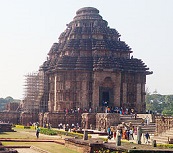
About 1255 the Konark (Sansk. "kona" + "ark" = corner + the Sun) Sun Temple at the mouth of the Chandrabhaga River in Orissa, India (21 mi. from Puri) is built by King Narasimhadeva I of the Eastern Ganga Dynasty, shaped like a giant chariot complete with 12 pairs of stone wheels and dedicated to the Sun God Surya; Euro sailors call it the Black Pagoda.
In 1256 Parakramabahu II repels another attack (first 1236) by Tambralinga on the Straits of Malacca, again with Pandya help.
In 1259 Ganapati dies, and his daughter Lady Ganapati (-1288) becomes ruler of Kakati in E India, going on to meet Marco Polo.
In the 14th cent. the Buddhist vacuum in Bengal causes those not converted to Islam to adopt Sufism and bhakti (pr. BUCK-tee), single-minded devotion to one Hindu god, who gets endless baksheesh - it's the new Mother Nature taking over?
In 1315 Sultan Alauddin of Delhi dies just as the Mongols are beginning to infiltrate the N frontiers of his Muslim domain.
In 1316 Muberak (Mubarak) Khilji (Khalji) (-1321) becomes the last Khilji ruler of Delhi (until 1320).
In Apr. 1318 a group of Franciscans led by Odoric of Pordenone (Odorico Mattiussi or Mattiuzzi) (1286-1331) incl. James of Ireland leave Padua, Italy on a mission to the East (ends 1330), taking them to Venice, Constantinople, Trebizond, Armenia, Media, Persia incl. Kashan, Yazd, Persepolis, and Shiraz, India (Thane near Mumbai), Sumatra, Java, Borneo, Champa, Guangzhou, Quanzhou, Zhejiang, Hangzhou, Nanjing, and Khanbaliq (modern-day Beijing) in 1324-7, returning via the Land of Prester John (Mongolia), Casan, Tibet, N Persia (incl. Tabriz) to Venice; in 1328 Odoric becomes the first Euro to visit Tibet - the original Pordenone's Complaint?
In 1319 Rinchan Shah briefly establishes Muslim rule in Kashmir.
In 1319 parts of India and Japan issue paper money (until 1331).
In 1320 Pakistani Sufi Sultan Mubarak Khilji of Delhi dies.

In 1321 the Muslim Tughlak (Tughluk) Dynasty in N India is founded by Turkish shah Ghiyas ud-din (Ghiyath al-Din) Tughlak (Tughluk) (-1325), who defeats the Khaljis and ends the Khalji Dynasty (begun 1288), then as Gharzi Khan moves 4 mi. E from Delhi to his new capital of Tughlakabad (Tughlaqabad).
In 1322 Shamsuddin Firuz dies, and Bengal splits into two parts (E and W).
On Feb. 1, 1325 Ghiyas-ud-din Tughlak is murdered by his son Muhammad bin Tughluq (Mohammad Tughlak) (1290-1351) who succeeds him as sultan of Delhi (until Mar. 20, 1351), going on to expand S as far as the Deccan; too bad, he is so cruel and fanatical in his long reign that he alienates both the subject Hindus and his own Muslims, causing his empire to be torn apart by revolt, with some provinces, esp. Bengal bengalling out (seceding).
In 1325 Morocco-born Muslim Berber scholar Ibn Battuta (1304-69) begins exploring as far as India and China (ends 1354).
In 1327 Mohammed Tughluk of Delhi sacks Halebid(u) in Karnataka, causing Viraballala III to move his Hoysala Dynasty capital to Tiruvannamalai (South Arcot) in Tamil Nadu.
In 1334 Madurai in Tamil Nadu, S India revolts and sets up the Muslim Madurai Dynasty (until 1378) under Sultan Jalal-ud-Din Ahsan Shah (-1339).
In 1334 Ibn Battuta reaches Delhi, and is given a warm welcome with lavish gifts.
On Apr. 18, 1336 the Vijayanagara ("city of victory") (Karnata) Empire (Kingdom of Bisnegar) (modern-day Hampi) (ends 1646) is founded on the banks of the Tungabhadra River in the S Deccan Plateau in S India by brothers Harihara and Bukka Raya from Warangal, who defeat the neighboring sultans N of Kistna and Tungabhadra and dominate S India by 1370, becoming a Brahman and Dravidian center, protecting India's S flank from Muslim invasion; temple patronage is expanded beyond the twice-born castes to Shudras, merchants, and women.
In 1338 Bengal is taken from Delhi by the Balban Dynasty (until 1539).
In 1339 after fleeing Kashmir from Turkic-Mongol chief Zulju (Dulacha) in 1320, ending the Lohara Dynasty (begun 1003), Suhadeva dies along with his brother Udayanadeva, and after allying with his successor Tibetan Buddhist refugee Rinchana, king of Zulju after converting him to Islam, Shams-ud-Din Shah Mir becomes king of Kashmir (until 1342), founding the Shah Mir Dynasty in Kashmir (ends 1561), immediately hiking taxes to the levels of S Indian kings; Islam goes on to become the dominant religion in Kashmir in this cent.
In 1340 Sultan Mohammed Tughluk of Delhi sends emissaries to the caliph in Egypt seeking recognition, which is received in 1344.
In 1343 the Hoysala Empire in S India in modern-day Karnataka (founded 1026) ends, and the Hindu kingdom of Vijayanagara (Karnata) (Bisnegar) (ends 1646) is founded in the Krishna Valley of S Deccan, India, with capital city at Vijayanagara (modern-day Hampi), going on to spread throughout S India and Ceylon.
In 1344 Sultan Mohammed Tughluk of Delhi orders his tax collectors (centurions) executed for failing to meet quotas, causing them to revolt in Gujarat in the S and take it over by next year.
The Black Death (the original Darth Vader) rockets through Europe's Internet with breathtaking speed? In Oct. 1347 a Genoese trading fleet arrives in Messina, Sicily carrying the Black Death (Bubonic Plague), caused by Yersinia pestis bacteria carried by fleas from rats; not rats but gerbils?; it also arrives in Egypt, Syria, and Cyprus; by 1351 it kills 20M-30M in Europe (a third of Europe's pop., and up to 60% in some areas), and 75M worldwide by 1361; world. pop. decreases from 450M to 350M-375M by 1400; Europe takes 150 years to return to 1347 pop. levels; it ravages China, halving its pop. from 123M in 1200 to 65M in 1400; lucky America is not affected, but not toughened up by it either?; rats didn't really spread it, because it spreads so fast from person to person?; French Franciscan Order minister-gen. (since 1329) Gerard Odon (Geraldus or Gerardus Odonis) (Guiral Ot) (1285-1349) is asked by the pop. of Messina to retrieve the relics of St. Agatha from Catania, and when they refuse he dips them in holy water and takes instead, dying of the plague on his return trip.
In 1347 a revolt against Sultan Mohammed Tughluk of Deli in Gulbarga, Daulatabad, Berar and Bidar in the Muslim areas of the Deccan elects Bahman Shah (-1348) as the Muslim first ruler of the Bahmani Sultanate (ends 1527), with capital at Gulbarga (Kalaburagi), which eventually begins building fortresses using Euro scientists.
On Mar. 20 1351 sultan (since Feb. 1, 1325) Mohammed Tughlak (b. 1290) dies, and Firoz Shah Tughlaq (1309-88)) becomes sultan of Delhi (until Sept. 20, 1388), watching the internal turmoil go from bad to worse.
In 1363 Golconda in S India revolts from Warangal, seceding next year.
In 1365 Bahmani Sultan Mohammed Shah I invades the Vijayanagara Empire.
In 1365 the Sukhothai Kingdom in N Thailand becomes a tributary of the Ayutthaya Kingdom (founded 1350).
In 1367 the Bahmani defeat the huge but weak armies of Vijayanagar using artillery manned by Europeans and Ottoman Turks, then massacre 400K in the Deccan.
In 1367 Jam Tamachi (Jam Khairuddin Al-Maroof Jam Tamachi bin Jam Unar (-1379) becomes sultan of Sindh in modern-day SE Pakistan (until 1379), founding the Makli Necropolis near Thatta for Sufi saint Shaikh Jamali, becoming the main funerary site for the Samma Dynasty with capital near Thatta, and filled with big tombs by the Mughals in 1570-1640; it eventually houses 500K-1M tombs.
In 1367 the Great Mosque of Gulbarga (founded 1358) in India is roofed with domes.

In 1369 Moroccan traveler-scholar Muhammad Ibn Battuta (b. 1304) dies after traveling through most of the Muslim World and many non-Muslim countries in North Africa, the Horn of Africa, West Africa, the Middle East, India, Central and Southeast Asia, and China, leaving his "Travels" (Rihla).

In 1370 with visions of Genghis Khan dancing in his head, Turkic Mongol warlord Tamerlane (Tamburlaine) (Timur-i Lang) (Timur Lenk) (Timur Leng) (Temur the Lame) (Tamerlano) (1336-1405) ("timur" = iron) gains control of the W Chagatai Khanate, going on to campaign across W, S, and C Asia, followed by Caucasus and S Russia, going on to becoming the most powerful ruler of the Muslim World and found the short-lived Timurid Empire. On Dec. 17, 1398 Tamerlane conqueres Delhi, India, sacking it and massacring the Hindu pop. in cold blood like er, cows, this is the ultimate Muslim religious experience. In his own words "In a short space of time all the people in the Delhi fort were put to the sword, and in the course of one hour the heads of 10,000 infidels were cut off, the sword of Islam was washed in the blood of the infidels, and all the goods and effects, the treasure and the grain which for many a long year had been stored in the fort became the spoil of my soldiers... Their women and children and their property and goods became the spoil of the victors. I proclaimed throughout the camp that every man who had infidel prisoners should put them to death, and whoever neglected to do so should himself be executed and his property given to the informer. When this order became known to the ghazis of Islam, they drew their swords and put their prisoners to death. One hundred thousand infidels, impious idolaters, were on that day slain. Maulana Nasiruddin Umar, a counselor and man of learning, who in all his life had never killed a sparrow, now, in execution of my order, slew with his sword fifteen idolatrous Hindus, who were his captives.... On the great day of battle these 100,000 prisoners could not be left with the baggage, and that it would be entirely opposed to the rules of war to set these idolaters and enemies of Islam at liberty... No other course remained but that of making them all food for the sword." What happened to Miranda rights and civilian trials with Jewish defense attorneys? And you thought Hitler was bad, or the Crusades or Inquisition. Imagine a Tamerlane Century 21 in America. After what Islam did to it, Delhi took a century to recover, and only after they realized that there were too many to slaughter did the Muslim clergy devise the fiction that Hindus are People of the Book.
In 1372 Shah Hamadan arrives in Kashmir, and converts the pop. to Islam en masse.
In 1378 Madura, India is conquered by Vijayangar, ending the Muslim dynasty (founded 1334).
Timur the Lame isn't timid about dining in Delhi, becoming the original Soup Nazi? On Sept. 24, 1398 after invading unresisting anarchic India, bad-to-the-bone Tamerlane crosses the Indus River, marches 80 mi. a day for two days (Nov. 6-7) to overtake fugitives at Bhatnair, massacres 100K Hindu POWs (like cows?) before Delhi on Dec. 12 for smiling when an Indian army appears in sight, then on Dec. 17 sacks Delhi and kills Dehli sultan Mahmud Tughlak, destroying the 2-cent.-old Delhi Sultanate (begun 1192); in his own words: "In a short space of time all the people in the Delhi fort were put to the sword, and in the course of one hours the heads of 10,000 infidels were cut off, the sword of Islam was washed in the blood of the infidels, and all the goods and effects, the treasure and the grain which for many a long year had been stored in the fort became the spoil of my soldiers... Their women and children and their property and goods became the spoil of the victors. I proclaimed throughout the camp that every man who had infidel prisoners should put them to death, and whoever neglected to do so should himself be executed and his property given to the informer. When this order became known to the ghazis of Islam, they drew their swords and put their prisoners to death. One hundred thousand infidels, impious idolaters, were on that day slain. Maulana Nasiruddin Umar, a counselor and man of learning, who in all his life had never killed a sparrow, now, in execution of my order, slew with his sword fifteen idolatrous Hindus, who were his captives.... On the great day of battle these 100,000 prisoners could not be left with the baggage, and that it would be entirely opposed to the rules of war to set these idolaters and enemies of Islam at liberty... No other course remained but that of making them all food for the sword"; Tamerlane then pulls out of India, leaving Mahmud's son Big Mac, er, Mahmud Tughlak II (d. 1414) as chief undertaker of a ghost Delhi, which takes a cent. to recover; after they realize that there are too many to slaughter, the Muslim clergy devise the fiction that Hindus are People of the Book?
In 1414 Sultan Mahmud Tughlak II dies, ending the Tughlak Dynasty in Delhi (begun 1315), and the Sayyid Dynasty begins in N India (until 1451), reduced to the Jumna Valley with iffy control over the Punjab; the Sayyids claim Arab descent from Prophet Muhammad, but nobody buys it and they can collect their revenues only at swordpoint?
In 1422 Ahmad Shah of Gujarat hires 3K foreign mounted archers as ministers, causing the natives to become jealous.
In 1429 Bidarbecomes capital of the Bahmani Dynasty in India, and is rebuilt in the Persian style.

In 1451 Afghan Pashtun warlord Bahlul Khan Lodi (-1489) topples the say-ya-did Sayyids in Delhi, and founds the Lodi Dynasty (ends 1526).

In 1459 the city of Jodhpur in Mandore in modern-day Rajasthan, India (modern-day pop. 1.0M/1.4M) is founded by Rao Jodha (1416-89).

In 1459 the Dakhil Darwaza (Gateway) in Gaur (Gour) (Gauda) (Lakhnauti), India, capital of Bengal is begun (finished 1474).
In 1483 Mahmud I of Gujarat conquers Champanir (near Baroda) this year and next; 700 Hindu Rajputs choose ritual death (jauhar) to Islam; his conquering of Girnar and Champanir causes Mahmud to be called Begharha (Two Forts); he goes on to build the Great Mosque of Champanir, the Sarkhej Palace, and the Adalaj Step Well.
In 1483 the Barid Shahi Dynasty is founded in Bidar in SW India (ends 1619).
In 1485 Indian environmentalist saint Guru Jambheshwar (1451-) founds the Bishnois ("Twenty-niner") religion that considers trees and animals sacred, and protects them.
In 1489 former slave Yusuf Adil Shah (1459-1511) becomes ruler of Bijapur, India, founding the Adil Shahi Dynasty, which rules for almost two cents.

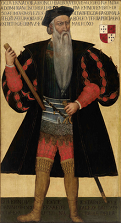
On July 8, 1497 Portuguese explorer Vasco da Gama (1460-1524) sails from Lisbon in four ships for a voyage around Africa to India, and rounds the Cape of Good Hope on Nov. 22; his voyage is long enough for scurvy to be discovered. Just what the Indians need? On May 20, 1498 Portuguese explorer Vasco da Gama (1460-1524) becomes the first European to sail around Africa to reach India as he arrives in Kappakadavu near Calicut (Calcutta) on the Malabar coast, finding that Arab merchants already live there; on Aug. 29 he departs for Portugal, sailing against the monsoon winds, taking 132 days to reach the Arab-run coastal town of Malindi (pop. 6K) next Jan. 7 (vs. 23 days the other way to India), during which time half of his crew dies, and the rest get scurvy; Game Vasco meets with the sheik of Malindi to sign a trade agreement, and hires a guide for his voyage to India, erecting a coral pillar, which survives to modern times; next year the Portuguese establish a trading post in Malinda, followed in 1509 by a custom house, which is abandoned in 1512, although Malindi remains the center of Portuguese activity in E Africa until 1593; the discovery of the sea route to India (bypassing the Muslim-infested Mediterranean) opens the Age of Global Imperialism, with round-trip distances longer than round-the-globe voyages along the equator. On Dec. 25, 1498 (Christmas day) Vasco da Gama sights and names the South African country of Natal (Birthday). In Sept. 1499 after two of his ships precede him in July-Aug., Vasco da Gama arrives in Lisbon, and is welcomed as a hero and awarded the title "Admiral of the Indian Seas" along with Dom (lord) by Manuel I, the latter title also being awarded to his siblings and their descendants; meanwhile Venice is shocked by news of a new sea route to India threatening its commercial supremacy, causing it to eventually begin building an inland empire (Padua, Verona, Cremona et al.) - I still got gama? On Feb. 12, 1502 after receiving the title of adm. in Jan., Vasco da Gama (1460-1524) leaves Lisbon on his Second Voyage around Africa with 20 ships, discovering the Seychelles, then arriving in Calcutta on Oct. 30, killing Muslims and spreading Christianity all the way, after which he founds and gives Portuguese protection to Cochin (Emakulam), the first European settlement in India, and the center of Roman Catholic penetration. In Feb. 1503 after wreaking savage vengeance at a trading station in Calcutta, Vasco da Gama leaves India for Portugal; Alfonso de Albuquerque (1453-1515)and his cousin Dom Francisco da Alameda help create the first Portuguese fortresses and trading posts in Cochin and Quilon, laying the foundation stone of Fort Cochin (Kochi) on Sept. 26; Unniram Koyikal I dies, and Unniraman Koyikal II (-1537) becomes ruler of Cochin (until 1537).


On Jan. 26, 1500 Brazil (named after brazilwood, which produces a valuable red dye) is discovered by Spanish sailor Vicente Yanez Pinzon (1461-1513) in a 4-ship fleet at Cape Santo Agostinho (Cabo Santa Maria de la Consolacion) near Cape Sao Roque; his four ships then turn NW and discover the estuary of the Amazon River 4 mo. later, mistaking it for the Ganges River and naming it Rio Santa Maria de la Mar Dulce; Pinzon then sails between Trinidad and the mainland and reaches the Gulf of Paria in Venezuela on May 1, then turns N, passes the Windward and Leeward Islands to the W, followed by Puerto Rico and Hispaniola to the N, then NW through the Bahamas, where he loses two ships, then returns to Palos in Sept.; meanwhile on Apr. 22 (24?) after leaving Lisbon on Mar. 9 with 13 ships and 1K crew on a royal trade expedition to India along Vasco da Gama's route along the Cape of Good Hope, Portuguese sailor Pedro Alvares (Álvares) de Cabral (1467-1526), lands in Brazil, claiming it for his king under the name Island of the True Cross; his shipmate Diogo Dias dances on the beach to the pipes of the Tupiniquim, easing their fears; Cabral sails for India after leaving a small force there; after losing half his fleet in a storm, he reaches SW India and founds the first Euro settlement in India in Cochin (Kochi), then reaches Calcutta and establishes a factory there; his co-capt. Pero (Pedro) Vaz de Caminha (1450-1500) writes to the king of Portugal about newly-discovered Brazil that "The best fruit that can be taken from it... will be saving its people" (by Christianizing them).
In 1505 Sri Lanka (Ceylon) is discovered by Portuguese explorer Lourenco de Almeida (1480-1508) (son of Francisco de Almeida), who founds a settlement.

Babar conquers North India and turns it into a Tower of Babel? In 1525 Muslim Turkish Mongol chief (5th-gen. descendant of Tamerlane) Babar (Babur) (Baber) ("Tiger") (Xahir-ud-Din Muhammad) (1483-1530), prince of Ferghana in Afghanistan marches through Afghanistan and Persia, headed for the Punjab. On Apr. 20-21, 1526 the First Battle of Panipat sees the Delhi Sultanate under Ibraham Lodi defeated by Turkic Muslim Babar (Babur) (Baber) ("Tiger") (Xahir-ud-Din Muhammad) (1483-1530), who occupies Delhi and Aghra and becomes emperor #1 of the Mughal (Mogul) Empire in N India (until Dec. 26, 1530), which peaks at 4M sq. km, making it the 2nd largest after the Maurya Empire (5M sq. km), founding a line that "builds like giants and finishes like jewelers", adopting Hindustani (derived from an obscure dialect of Western Hindi, which, along with Eastern Hindi is derived from Prakrit) as its official language; religious toleration is allowed, and the Muslims introduce Arabic and Persian words and form the subdialect of Urdu, written in a Persian script, pissing-off "patriotic" Hindus, causing them to create the artificial subdialect of Hindi (different than the Western Hindi language, parent of Hindustani), purging the Muslim words and substituting Sanskrit, and writing it with the Devanagari script, causing a Hindustani subdialect war in India.

On May 17, 1538 Afghan rebel Sher Shah ("Tiger King") Suri (Farid Khan)(1486-1545) drives out Mogul emperor Humayun and becomes emperor of Delhi (until May 22, 1545), founding the Suri Dynasty (ends 1556), going on to coin the term "Rupiya" (Rupee) (Sansk. "rupyakam" = silver coins) for a silver coin weighing 178 grains; he also mints copper Dam coins and gold Mohur coins, which the Mughal emperors later standardize.
In 1560 fhe rajah of Jaipur submits to Akbar the Great.
In 1562 the Goa Inquistiion in SW India by the Portuguese Catholic Church begins (ends 1812), trying 16,202 by 1774, executing 57, and burning 64 in effigy, becoming their most violent inquisition; it is suspended in 1774-8; the inquisition causes Roman Catholic settlers to begin migrating N to Canara (Kanara) (until 1763), creating the Mangalorean Catholics.
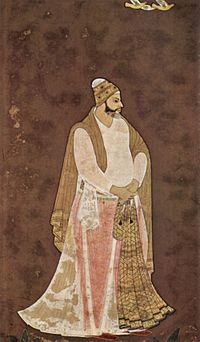
In 1591 Qutb Shahi sultan #5 (1580-1611) Muhammad Quli Qutb Shah (1565-1612) establishes the city of Hyderabad (originally Baghnagar = city of gardens) on the S bank of the Musi River in SC India (modern-day pop. 6.8M/7.7M) to extend the fortified capital of Golconda, named after Quli Qutb's dancing girl babe Bhagmati, who converted to Islam under the name Hyder Mahal; it is laid out in a grid plan; it goes on to become known as "the City of Pearls" as well as a diamond trading center; in 1687 it is annexed by the Mughals.

On Oct. 28, 1627 Mughal emperor #4 (since Oct. 15, 1605) ("Conqueror of the World") ("Possessor of the Planets") ("Mirror of the Glories of God") ("King of Increasing Fortune") Jahangir (b. 1569) dies, leaving 2,235,600 carats of pearls, 931,500 carats of emeralds, 376,600 carats of rubies, 279,450 carats of diamonds, and 186,300 carats of jade, and next Jan. 19 his son Prince Khurram becomes Great Mogul (Mughal) #5 Shah Jahan (Jehan) (1592-1662) (Pers. "King of the World) (until July 31, 1658), going on to extend the empire S through the Deccan to the Maratha States.

On June 17, 1631 Arjumand Shah Begum (b. 1593) (AKA Mumtaz Mahal, or Jewel of the Palace), 2nd wife of Indian Mughal emperor #5 (1628-58) Shah Jahan dies in childbirth after bearing him 14 children; he dedicates the drop-dead-gorgeous Mughal-style white domed Taj Mahal (Pers. "best of buildings") on the banks of the Yamuna River in Agra (built in 1632-53) to her memory; the project costs $18M.

On July 31, 1658 Mughal) emperor (since Jan. 19, 1628) Shah Jahan (1592-1666) is deposed and imprisoned by his 3rd son Abul Muzaffar Muhi-ud-Din Mohammad Aurangzeb (great-grandson of Akbar the Great), who murders his two older brothers and becomes Aurangzeb (Aurungzeb) (1618-1707) (AKA Alamgir = "Universe-seizer"), Mughal emperor #6 of India (until Mar. 3, 1707), going on to extend the empire S again through the Maratha States almost to the S tip of India, becoming known for incorporating Hindus in his admin. in high places although he is a devout Muslim, reaching a yearly tribute of 38.6M British pounds in 1690; trying to top his daddy's Taj Mahal, he builds the Pearl Mosque in Delhi in 1659-60, and the Aurangzeb Mosque in Benares in 1674.

In 1674 Indian Mughal emperor Aurangzeb abolishes 80 types of taxes and reinstitutes the Muslim jizya tax for adult males who don't serve in the military, pissing-off non-Muslim Hindus; meanwhile guerrilla leader Shivaji Bhosle (1627-80) founds the Hindu Mahratta (Maratha) Kingdom (Empire) (Confederacy) in W India (ends 1818), declares it independent from the Muslim Moguls (Mughals), and is crowned in Raigarh.
In 1674 the French East India Co. establishes their HQ in Pondicherry in SE India, becoming the last of five trading posts established along the S Indian coast since 1668.
In 1684 the French capture Chandernagore (Chandannagar) in West Bengal 20 mi. N of Calcutta (until 1778).

On Apr. 13, 1699 Patna-born (Vaisakhi) 10th and final Sikh guru Gobind Singh (1666-1708) gives birth to Khalsa, the formal Sikh religious identity with the five symbols, incl. never cutting the hair, carrying a comb for neatness, and wearing knee-length underwear, steel bracelet, and a sword.
In 1723 the princely state of Bhopal in the Vindhya Mts. of C India is founded by an Afghan chieftain who had fought in Aurangzeb's army, becoming the capital of Madhya Pradesh.

On Nov. 18, 1727 the city of Jaipur in Rajasthan, India (modern-day pop. 3.1M) 167 mi. from modern-day New Delhi is founded as a trading city and new capital by Rajput maharaja (1699-1743) and astronomer Sawai Jai Singh II (1688-1743) of Amber, becoming known for its Havelis, courtyard mansions; in 1876 the city is pained pink to welcome English Prince Albert Edward of Wales (future Edward VII) , causing the city to be nicknamed "the Pink City"; the Jantar Mantar (magical device), a network of three observatories based in and S of Delhi is built there by the maharaja, who designs masonry structures and crude instruments because his Jesuit advisers were prohibited by the Church from accepting the views of Galileo and Copernicus; the city is designed according to Hindu doctrine in seven rectangular areas according to the caste system, with the palace in the 7th and holiest one, and the observatory in the place of the temple; other observatories are built in Delhi, Mathura, Ijjain, and Varanasi.
In 1746 the First Carnatic War (ends 1748) between France and Britain over control of S India begins; the French oust the British from Madras and Machilipatnam (Bandar).


On June 20, 1747 cruel shah (since Mar. 8, 1736) Nadir (Nader) Shah (b. 1688) is assassinated with popular approval by his own military bodyguard in a palace revolt, and in Oct. Hanafi Sunni Muslim ethnic Pashtun (Sadozay clan of the Abdali tribe) (who claim descent from the lost Israeli tribe of Joseph) Ahmad (Ahmed) Shah Durrani (1724-73), the bodyguard cmdr. proclaims himself king (shah) of Afghanistan in Kandahar, adopting the title Duran Duran, er, Durr-i Duran (Pearl of Pearls), founding the Durrani Dynasty in Afghanistan and E Persia, led by his Sadozay clan (until 1826), going on to puncture, er, jab, er, invade the Punjab 6x in 1748-52, and 2x more in 1753-67; meanwhile the rival Barakzay clan waits in the wings in Afghanistan, and Nadir's Afshar dynasty holds on in Mashhad and Khurasan province under Ebrahim Afshar (-1748), nephew of Nadir Shah, who on July 6 becomes king (until Sept. 1748); meanwhile his brother Adil Shah (Pers. "righteous king") kills all other heirs to the throne and proclaims himself shah, but isoverthrown and killed by his own troops next Sept. 24; meanwhile Karim Khan Zand (1705-79) of the Persian Zand tribe (a former soldier in Nadir Shah's army) controls W Persia, with capital at Shiraz, taking the title of wakil (deputy) instead of shah and reversing Nadir Shah's anti-Shiite policy, establishing a dynasty that lasts until 1794; meanwhile Mamluk officers of Georgian origin obtain autonomy of Iraq from the Turkish sultan (until 1831), going on to suppress tribal revolts and bring peace on the Iran-Iraq frontier, curb the Janissaries, and modernize the economy and military.
On Oct. 18, 1748 after Russian troops march through Bohemia toward the Rhine River, the War of the the Austrian Succession (King George's War) (War of Jenkins' Ear) (begun 1740) is ended by the Treaty of Aix-la-Chapelle (Aachen), a gen. recognition of the Pragmatic Sanction and of HRE Francis I; France returns the Austrian Netherlands and the British colonies; Louisbourg is returned by Britain to the French, which enrages New Englanders, but in return they give Madras back to the British, ending the First Carnatic War (begun 1746); the British privilege of transporting slaves to Spanish Am. is renewed, but the problem of Spanish searching of British ships is avoided; Frederick II of Prussia retains Silesia, sewing the seeds for another European war later; Parma is given to Charles II's younger brother Philip (Felipe) of Spain (1720-65);

In 1749 the Second Carnatic War (ends 1754), an unofficial war between the British East India Co. and the French Compagnie des Indes for control of S India begins when British adm. Edward Boscawen (1711-61) sieges French-held Pondicherry, which is defended by Marquis Dupleix for five weeks without success.
In 1754 after British gens. Robert Clive and Henry M. Lawrence frustrate all hopes of a French empire in India, Louis XV recalls and repudiates Marquis Dupleix in order to negotiate peace with England, signaling the end of official French imperial hopes there; the Second Carnatic War (begun 1749) ends - with France's popped cherry?

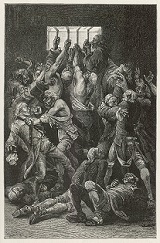
White Euros get ideas about death camp design from India? In 1756 another war breaks out between the French and British in S India; Mirza Mohammad Siraj-ud-Daulah (Dawla) (1733-57), last independent Muslim Nawab of Bengal attacks Calcutta, attempting to drive all British out of Bengal; on June 20 he captures the British East India Co. stronghold of Ft. William, allegedly confining the 146-man British garrison in the 20-sq.-ft. (18 ft. x 14 ft. x 10 in.) Black Hole of Calcutta (only two small windows), killing all but 23 of them overnight; later investigations find that 114 of the men were actually killed defending the fort, and only 9 officers were confined, of which three died, two from wounds, and that it was all fabricated by survivor English surgeon (temp. gov. of Bengal in 1760) John Zephaniah Holwell (1711-98); on Dec. 6 Robert Clive relieves British fugitives in Fulta 20 mi. S of Calcutta.


On June 23, 1757 the British East India Co. gets revenge for the Black Hole and gains control of Bengal (until 1947) when Maj.-gen. Robert Clive, 1st Baron Clive (1725-74) wins the decisive Battle of Plassey (a village in West Bengal N of Calcutta); Siraj-ud-Daulah escapes to Patna via Murshidabad, is arrested by his former #2 man, traitor army chief (of Arab descent) Mir Jafar (Syed Mir Muhammed Jafar Ali Khan) (1691-1765) (who got pissed-off at his elevation of a Hindu to supreme diwan), and brutally executed on July 2 by Mohammad Ali Beg on his orders, and he becomes the first British puppet Nawab of Bengal (until 1765); Ft. William in Calcutta on the E bank of the Hooghly River is built by the British after the Battle of Plassey; Clive names the strong-smelling tasty fish Bombay duck after the Bombay Daak (Mail) train, which carries stinky newspapers.
On Apr. 19, 1758 after invading Punjab, the Marathas drive out the army of Ahmed Shah Abdali from Lahore, then station armies in Attock, Multan, and Peshawar, evicting the last remnants of the Afghan army, becoming their most northwesternly penetration of the Punjab, lasting 14 mo., after which the phrase "Atakepaar jhende" (Flags beyond Attock) becomes a slogan of pride.

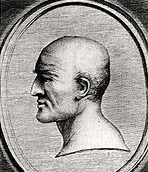
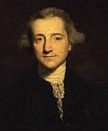
On Jan. 22, 1760 the British under Sir Eyre Coote (1726-83) defeat the French under Thomas Arthur, Comde de Lally, Baron de Tollendal (1702-66) at the Battle of Wande Washe (Wandiwash) (Wandewash) in India, retreating to Pondicherry; Robert Clive leaves India, and Henry Vansittart (1732-70) becomes gov. of Bengal (until 1764), going on to depose Mir Jafar in favor of his son-in-law Mir Kasim as nawab of Bengal.
On Dec. 6, 1760 the British begin sieging French-held (since 1674) Pondicherry in SW India, held by French gen. Lally-Tollendal (ends Jan. 15, 1761). On Jan. 15, 1761 the British capture Pondicherry in SW India, the principal French factory in India, ending French dominion in India; French gen. Lally-Tollendal is captured, sent to London, England as a POW, and sent to Paris two years later to face charges of treason, ending up executed on May 9, 1766 after a kangaroo trial.
In 1765 the British East India Co. takes control of India and establishes a trade monopoly, taxing the pop. then using the revenues to purchase Indian goods, allowing it to steal $45T by 1938?
In 1770 a famine in Bengal kills up to one-third of the pop. in affected areas; more famines in 1876-7 (5M killed), 1899 (4.5M killed), and 1943 (5M+ killed).



On Apr. 2, 1783 after Lord North and Charles James Fox make up and help defeat British PM (since July 4, 1782) Lord Shelburne Mar. 26, aristocratic Whig (lord lt. of Ireland in 1782) William Cavendish Bentinck, 3rd Duke of Portland (1738-1809) becomes PM (until Dec. 18) of a coalition govt., with Fox as secy. of state, and Fox and North calling the real shots; too bad, after Fox introduces the India Bill, proposing that the govt. of India be vested in an India Board appointed by Parliament, the pissed-off king personally intervenes, causing Portland's ministry to come unglued (uncemented?), and on Dec. 19 American-woman-get-away-from-me "independent Tory" (not a Whig) William Pitt the Younger (1759-1806) becomes English PM (until Mar. 14, 1801), the youngest in history pip pip bloody bloody and all that rot; for one reason or another Fox is kept out of the ministry until 1806, becoming content with being the you-really-got-me hot lips orator of Parliament; meanwhile conservative Whig William Wentworth-FitzWilliam, 2nd and 4th Earl FitzWilliam (1748-1833) (a descendant of William I the Conqueror, who inherited his uncle the Marquess of Rockingham's vast Yorkshire estates in 1782, making him a player, and who was slated to become head of the India Board but now is out of that job) becomes head of the opposition.
Late in the 18th cent. several thousand persecuted mainly rich merchant Jews from Arab countries, incl. Iraq (esp. Baghdad), Syria, Yemen. and Persia begin immigrating to India, becoming known as the Yehudi or Baghdadi Jews, settling in commercial cities incl. Surat, Bombay, and Calcutta, as well as Rangoon, Burma, later adopting the English language and migrating to England by the end of the 19th cent.
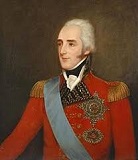
On May 18, 1798 Richard Colley Wellesley, 1st Marquis Wellesley (1760-1842) (brother of the Duke of Wellington) becomes gov.-gen. of India (until July 30, 1805).
In May 1814 the Gurkha (Gorkha) (Anglo-Nepalese) War begins (ends Mar. 6, 1816) when 12K Gurkhas in Nepal begin a war with 22K men of the British East India Co. under Warren Hastings, former gov.-gen. of India, introducing Brits to the curved Kukri knife.
On Mar. 4, 1816 the Sugauli (Sugowlee) (Seggulee) Treaty (signed Dec. 2) is ratified, ending the Gurkha War of 1814, ceding one-third of Nepal to the British Raj in India incl. Kumaon, Garhwal, and parts of Sikkim, establishing a British rep in Katmandu, and committing Gurkhas for British military service; Nepal is prohibited from employing foreigners in military service; three decades of "peace without cordiality" with Nepal.


On Jan. 28, 1846 using the excuse of ending prolonged internal disorder, the well-ordered British (East India Co.) send the British 16th Lancers under Sir Harry Smith (Henry George Wakelyn Smith) (1787-1860), who defeat the Sikhs under Ranjodh Singh Majithia (-1872) at the Battle of Aliwal, followed on Feb. 10 by the decisive Battle of Sobraon, after which on Mar. 9 they sign Treaty of Lahore, annexing Punjab; they sell Kashmir to Gulab (Ghulab) Singh (1792-1857) of Jammu, who titles himself maharaja (prince) and establishes a permanent tyrannical princedom - for your career starter kit call 1-800-1846-RAJA?

On Jan. 12, 1848 Scottish-born British statesman James Andrew Broun-Ramsay, 1st Marquess of Dalhousie (1812-60) becomes gov.-gen. of British India (until Feb. 28, 1856), going on to introduce the "three great engines of social improvement", passenger trains, the electric telegraph, and uniform postage, and consolidate East India Co. rule in India, engaging in centralizing activity and expansive annexations which, combined with his overbearing self-confidence later get him accused of fomenting the Indian Rebellion of 1857 - say 'IN-dya' and squint through your pince nez?
On Apr. 16, 1853 the first passenger train journey in India sees 400 people pulled by 14 carriages and three steam locomotives travel from Bombay to Thane.
On Mar. 30, 1855 Britain and Afghanistan join against Persia in the Treaty of Peshawar, confirming British annexation of Peshwar and the Punjab, and causing Dost Mohammed to renounce expansion into British India.

On Feb. 28, 1856 Charles John Canning, 1st Earl Canning (1812-62) becomes gov.-gen. #21 of India (until Mar. 21, 1862), facing the 1857 Indian Rebellion, his leniency earning him the nickname "Clemency".







The English go too far with their WASP superiority thing and get what's coming to them in India? On May 10, 1857 after the 250K Hindu and Muslim Sepoy (Urdu for soldier) (Indian native) soldiers of Oudh and Bengal in N India go ape at the prospecting of putting the slimy new pig-fat and cow-fat covered cartridges for the new British Enfield rifles into their mouths, the 1857 Indian (Sepoy) Rebellion, against 45K British soldiers begins in Meerut, led by Nana Sahib (1824-?), spreading to Delhi, ending the Mogul (Mughal) Dynasty (founded 1526); on May 10 Col. John Finnis, cmdr. of the 11th Native Regiment of the British Indian Army attempts to lecture his troops on the parade ground not to mutiny, and they fire a volley at him, killing him; on May 21 the Brits blow away rebellious sepoys after tying them to cannons, insuring that the revolt will be particularly fanatical?; Hodson's Horse (Corps of Guides, Punjab Irregular Force), a regiment of irregulars is formed by British Maj. William Stephen Raikes Hodson (1821-58), who is KIA in Lucknow after introducing the khaki uniform and capturing Bahadur Shah II, emperor/king of Delhi; British gov.-gen. (since 1856) Charles Canning, 1st earl Canning issues a proclamation declaring the lands of the province of Oudh forfeited, causing Lord Ellenborough to send him a secret letter demanding his resignation, but he stands his ground and stays in office. On May 22 the 31st Punjabis infantry of the British Army, composed of Muslims, Sikhs, Dogras (mostly Hindus), Hill Rajputs, and Gurkhas is formed in Ferozepur; called Van Cortlandt's Levy until 1903, it becomes part of the Pakistan Army in 1947 as the 14th Battalion of the Punjab Regiment. On May 30 the Siege of Lucknow sees the British sieged by the rebels of Oudh led by Begum Hazrat Mahal and Birjis Qadra, holding out while two relief attempts arrive, then evacuating on Nov. 27. On June 10 the 30th Punjabis infantry of the British Indian Army, composed of Muslims, Sikhs, and Dogras (mostly Hindus) is raised in Ludhiana as the 22th Regiment of the Punjab Infantry; in 1947 it becomes the 13th Battalion of the Punjab Regiment in Pakistan. On June 30 Gulab Singh (b. 1792) dies, and his son Rambir Singh (1830-85) becomes tyrant prince (maharaja) of Sikh Kashmir (until 1885). In late June the Siege of Lucknow begins (ends Nov. 18); meanwhile the rebels are successively defeated by the Brits under 5' "muscular Christian" Sir Henry Havelock (1795-1857) at Fatehpur (July 14) Aong (July 15), Pandoobridge (July 15), and Cawnpore (Kanpur) (July 16); too bad, on July 15 at Cawnpore as the British approach, 180 women and children put in a harem are massacred by two Muslim butchers and thrown into a well, causing an outcry and stiffening British resolve; to bad, when the local Brits learn of the extent of the massacre they descend into horrible acts of brutality, showing that white superiority is skin deep; the mad-as-hell Brits under Sir Henry Havelock go on to crush Sepoy rebels at Unao (July 29), Busherutgunge (July 29, Aug. 5), Boorhya (Aug. 12), and Bithur (Aug. 16). On Sept. 25 the Brits in sieged (since late June) Lucknow greet the First Relief of Lucknow by reinforcements under Sir Henry Havelock, who find 650 of the original 1.7K defenders, and join the garrison but are unable to break the siege, until the Second Relief of Lucknow led by Sir Colin Campbell arrives in Oct., and relieves them on Nov. 18, withdrawing to Cawnpore, where on Nov. 19-Dec. 6 the Second Battle of Cawnpore is fought against rebel leader Tantya Tope (pr. TOH-pay) (Ram Chandra Pandurang) (1814-59); Gen. Sir James Outram, 1st Baronet (1803-63), hero of Khushnab in Persia further distinguishes himself by taking the Chattar Manzil (Umbrella Palace) in Lucknow, finishing the Sepoys off, and becomes a British hero; meanwhile on June 8-Sept. 21 Brits, led by British military hero brig. gen. John Nicholson (b. 1822), "the Hero of Delhi" seige Delhi; on Sept. 23 Nicholson (by now "the Hero of Delhi") dies of wounds received after covering for the incompetence of his superior Maj. Gen. Sir Archdale Wilson (1803-74) with the soundbyte: "Thank God I have yet the strength to shoot him if necessary"; Nana Sahib disappears, either dying of malaria in Sept. or fleeing to Nepal; after it's all over, a bill is introduced in Parliament to take the govt. of India away from the East India Co. and put it under the crown, but it fails; lucky for the Chinese, British troops intended to fight them in Canton are diverted to India; the song The Campbells Are Coming is inspired by the bravery of the Scotch Highlanders under Glasgow-born Sir Colin Campbell coming to the rescue of the British at Lucknow; the scare caused by the Sepoy Mutiny causes the British to rush to build a strategic rail network in India so they can prevent a repeat. On Nov. 24 Sir Henry Havelock (b. 1795) dies of dysentery contracted in the heat of the battle after his son (a lt.) Sir Henry Marshman Havelock-Allan, 1st Baronet (1830-97) distinguishes himself on July 16 in Cawnpore. On Dec. 23 the 33rd Punjabis (Allahabad levy) infantry regiment of the British Indian Army is raised; initially manned with low-caste Hindus, in 1890 it is remanned with Punjabi Muslims; after Pakistani independence in 1947, it becomes the 15th Battalion of the Punjab Regiment.


Pedophiles split the Brahma, Vishnu, Siva worshipers in India? In 1857 Keshub Chunder Sen (1838-84) of Bengal becomes the 3rd leader of the Brahmo Samaj Hindu religious sect in India, and attempts to abolish child marriage, causing the sect in 1865 to split into the Adi ("original") Samaj and the Bharatvarshiya Brahmo Samaj, under his leadership; too bad, in 1878 he marries off his 13-y.-o. daughter to a rich Hindu maharajah, causing another split into the Sadharan ("universal") Brahmo Samaj and the Nava Bidhana ("new dispensation") under his leadership; meanwhile in 1860 the Brahman leader Dayananda Sarasvati (1824-83) founds the Arya Samaj sect, which also opposes child marriage.

In 1860 Scottish-born liberal self-taught laissez-faire economist James Wilson (1805-60), founder of The Economist mag. and the Std. Chartered Bank develops India's first budget, incl. an income tax that becomes widely hated by the zamindars (landed class), persisting to modern times; his understudy Sir Richard Temple later utters the soundbyte: "He [Wilson] introduced for the first time in India a financial budget framed upon the English model – inspired the public mind with fresh confidence – brought together the threads of finance which had been broken and scattered by a military and political convulsion – stimulated the operations of the Military Finance Commission to review the numerous branches of civil expenditure – reviewed the existing system of audit and account – besides discharging the multifarious duties devolving on a finance minister and a member of the general government."
In 1875-8 the Great Drought causes the Great Indian (Madras) Famine of 1876-8 in India, the N Chinese Famine of 1876-9 and other famines in Africa, SE Asia, Australia, and NE Brazil in 1876-8 that kill 30M-6M incl. 5.5M in India and 9M-13M in China, aided by an El Nino in 1877-8.

On Apr. 7, 1875 Hindu scholar Swami Dayananda Saraswati (1824-83) founds the Arya Samaj ("Society of Nobles") in Bombay, India, a Hindu reform movement condemning idol worship, animal sacrifices, and temple offerings, priestcraft, the caste system, untouchability, child marriages, and discrimination against women, causing Hinduism to come into vogue in the Western world - annihilate your samsara, you dharma bums, and attain Nirvana?

On May 1, 1876 at PM Benjamin Disraeli's insistence, Queen Victoria (1819-1901) is proclaimed Empress of India by Parliament in the Royal Titles Act of 1876; in return she grants him the title of Earl of Beaconsfield.
On Dec. 28-31, 1885 the First Indian Nat. Congress in Bombay is attended by 72 delegates representing each province of India, incl. 54 Hindus, 2 Muslims, Jains, and Parsis, going on to go from moderate to radical by 1905, backing independence.
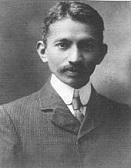
In Apr. 1893 after leaving India, 24-y.-o. well-dressed Porbandar, India-born Gujarat, India-raised London-educated barrister Mohandas Karamchand Gandhi (1869-1948) is kicked out of the first class compartment on a train in South Africa because he isn't white, then thrown off the train, which sets him on his life course of fighting against white oppression, founding the Natal Indian Congress in 1894 - just because you're not wearing clothes doesn't mean you're not intuitive?

On Nov. 23, 1910 after declining the post of British ambassador to the U.S., newly-created Charles Hardinge, 1st Baron Hardinge of Penshurst (1858-1944), an admirer of Mohandas Gandhi is appointed as viceroy and gov.-gen. of India (until Apr. 4, 1916), presiding over the move of the capital from Calcutta to New Delhi in 1912, and going on to deploy nearly all British troops in India as well as many native Indian troops outside India in WWI.
In 1913 the Ghadar Party is founded in San Francisco, Calif. by expatriate Indian Sikhs and Hindu Pujabis in the U.S. and Canada to secure India's independence from British rule by military means; after WWI it splits into Communist and anti-Communist factions before being dissolved in 1948.
On Feb. 19, 1915 the Ghadr Rebellion of expatriate Indian Sikhs and Hindu Punjabis from the W coast of the U.S. is ruthlessly suppressed by the British, after which on Mar. 15 the 1915 Defense of India (Regulations) Act is enacted by the British gov.-gen. of India as an emergency measure, and immediately applied in the Lahore Conspiracy Case Trial in Lahore, which convicts 291, giving out 42 death sentences, 114 life sentences, 93 shorter prison sentences, and 42 acquittals, after which the Hindu-German Conspiracy Trial in San Francisco, Calif. on Nov. 20, 1917-Apr. 24, 1918 of 26 Ghadar Party Indian nationalists, nine Germans, nine Americans, and nine Indians for conspiracy with Germany to form a military enterprise against Britain, violating U.S. neutrality, and all are fund guilty and sentenced to 60 days to 22 mo.; at the end of the trial defendant Ram Chandra is shot and killed by deendant Ram Singh while taking the witness stand, after which U.S. Marshal James H. Holohan kills him. On Feb. 20 the Germans make good their war zone notice and sink Norwegian ship
In 1915 famous Indian nationalist Mohandas Karamchand Gandhi (1869-1948), head of the Indian Passive Resistance Movement (from a wealthy Indian family of the merchant or gandhi class) returns from South Africa to India, traveling among the common people and establishing a Satyagraha Ashram on the banks of the Sabarmati River; Jan Smuts comments "The saint has left our shores, I hope forever"; he joins the Indian Nat. Congress, becoming its leader in 1920, increasing the demands until the Jan. 26, 1930 declaration of independnce - in his dhoti?
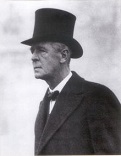

On Apr. 4, 1916 Queensland gov. (1905-9) and New South Wales gov. (1909-13) Frederic John Napier Thesiger, 1st Viscount Chelmsford (1868-1933) becomes viceroy and gov.-gen. of India (until Apr. 2, 1921), going on to create the Montagu-Chelmsford Reforms with radical Liberal Edwin Samuel Montagu (1879-1924), British secy. of state for India in 1917-22 (3rd Jew in the British cabinet after Sir Herbert Samuel and Sir Rufus Isaacs), introducing self-govt. to India.
On Aug. 20, 1917 new British radical Liberal secy. of state for India (since July 17) Edwin Samuel Montagu gives a speech known as the Declaration of 1917 in the House of Commons, promising a gradual transfer of authority from British to native hands in India.

On Mar. 10, 1919 the Rowlatt Act ends the civil liberties of Indians; on Mar. 30 Gandhi announces his resistance; on Apr. 13 British troops under Brig. Gen. Reginald Edward Harry Dyer (1864-1927) massacre hundreds (379-1000) of peaceful protesters in the Amritsar (Jallianwala Bagh) Massacre in the Sikh city of Amritsar, causing Dyer to become known as the Butcher of Amritsar.
On Dec. 23, 1919 due to the Montagu-Chelmsford (Mont-Ford) Reforms by British secy. of state for India (1917-22) Edwin Samuel Montagu and British viceoy of India (1916-21) Lord Chelmsford, Britain passes the Govt. of India Act, instituting a new constitution for India with a dyarchy (dual form of govt.) for major provinces, expanding native participation.

On Mar. 18, 1920 Mohandas K. "Mahatma" Gandhi (1869-1948) becomes the leader of the Indian Nat. Congress, and on Mar. 20 he recommends Satyagraha (Non-Cooperation), nonviolent disobedience against the British.
On Mar. 18, 1922 Gandhi is sentenced to six years on civil disobedience pip-pip sedition charges; he is released after two years.
In 1924 Gandhi fasts for 21 days in protest against the Hindu-Moslem feuds in India - no cow, no pork, no nothing?
On Dec. 19, 1929 the Purna Awarj (Sansk. "purna" + "swa" + "raj" = complete self rule) (Declaration of Independence of India) (Declaration of Sovereignty and Self-Rule) is promulgated by the Indian Nat. Congress, containing the soundbyte: "We believe that it is the inalienable right of the Indian people, as of any other people, to have freedom and to enjoy the fruits of their toil and have the necessities of life, so that they may have full opportunities of growth. We believe also that if any government deprives a people of these rights and oppresses them the people have a further right to alter it or abolish it. The British government in India has not only deprived the Indian people of their freedom but has based itself on the exploitation of the masses, and has ruined India economically, politically, culturally and spiritually. We believe therefore, that India must sever the British connection and attain Purna We believe that it is the inalienable right of the Indian people, as of any other people, to have freedom and to enjoy the fruits of their toil and have the necessities of life, so that they may have full opportunities of growth. We believe also that if any government deprives a people of these rights and oppresses them the people have a further right to alter it or abolish it. The British government in India has not only deprived the Indian people of their freedom but has based itself on the exploitation of the masses, and has ruined India economically, politically, culturally and spiritually. We believe therefore, that India must sever the British connection and attain Purna Swaraji or complete sovereignty and self-rule"; on Dec. 31 the Flag of India is hoisted by Jawaharlal Nehru on the banks of the Ravi River in Lahore (modern-day Pakistan), with Congress asking the people to celebrate Jan. 26 as Independence Day.In 1930 Time Mag. Man of the Year: Mohandas K. Gandhi (1869-1948). World pop.: 2B (a gain of 1B in 130 years); China 410M, India 338M, U.S.S.R. 168M, Germany 64M, Britain 46M; the Japanese pop. increase peaks at 15.3 per thousand (1M per year), declining to 14.4 in 1935, causing Japan's pop. to reach 69.2M in 1935, double that of 1872 (34.8) - time for a little warry war war war?
On Jan. 26, 1930 the Indian Nat. Congress celebrates its first Independence Day, which the British snub, causing Gandhi to devise a program of civil disobedience over the British salt tax; on Mar. 2 Gandhi writes a letter to Indian viceroy Lord Irwin, informing him of his intention of starting the civil disobedience on Mar. 12 if his demands are not met.
On Apr. 6, 1930 after beginning the Dandi Salt March (Satyagraha) on Mar. 12, walking 241 mi. with 78 members of his ashram from Sabarmati, Gujarat to the village of Dandi (Dandhi) on the Arabian Sea, greeted along the way by large crowds, sparking an independence sentiment in the "village masses", Mahatma Gandhi defies the 1882 British Salt Act and its monopoly and makes his own dandy salt from seawater in Dandi, getting arrested at midnight on May 5, backfiring on the British when it makes him a global hero and Time mag. Man of the Year, then released in victory on Mar. 4, 1931 with the signing of the Gandhi-Irwin Pact and an invitation for Gandhi to attend Round Table talks in London to discuss Indian independence.
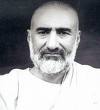
On Apr. 23, 1930 nonviolent Indian Pashtun leader Khan Abdul Ghaffar Khan (1890-1988) AKA "the Frontier Gandhi" is arrested during the salt protests, causing a crowd to gather in the Kissa Khwani (Storytellers) Bazaar in Peshawar, after which British troops open fire and kill 200-250.
In 1930-2 the three Round Table Conferences are held between the British viceroy and Indian leaders to discuss India's dominion status.
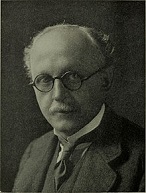


On Feb. 13, 1931 New Delhi S of Old Delhi (modern-day pop. 260K/27.9M) becomes the new capital of India, designed by English #1 architect Sir Edwin Landseer Lutyens (1869-1944), along with several monuments incl. the India Gate (1931) and the Rashtrapati Bhavan (Viceroy's House) (Presidential Residence) (1912).

On Apr. 18, 1931 former Liberal MP (1900) and gov.-gen. of Canada (1926-31) Maj. Freeman Freeman-Thomas (1866-1941) is created earl of Willingdon, and appointed viceroy #22 of India (until Apr. 18, 1936), improving conditions; in 1936 he is created marquess.

In 1931 Indian guru Meher Baba ("compassionate father") (1894-1969) (real name Merwan Sheriar Irani), who was turned on by Muslim holy woman Hazrat Babajan in Pune at age 19, assembled the "five perfect masters", picked Upasni Maharj for seven years of spiritual training, then began a code of silence in 1925 begins visiting the West to gather new sucker, er followers, finally declaring himself the Avatar (incarnation of God) on Feb. 10, 1954.
In 1932 speaking of monkeys, the British declare the Indian Nat. Congress illegal and arrest Time Mag. Man of the Year Gandhi.


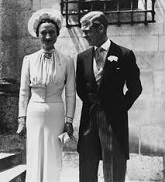
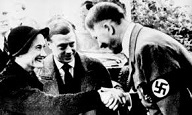
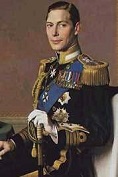


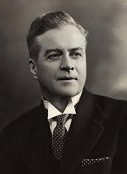

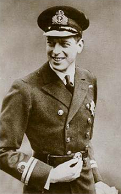

King for a year, or, I Have Eight English Eddies and She Has a Brazilian Bikini Wax, or, The Original Homer Simpson? On Jan. 20, 1936 king (since May 6, 1910) George V (b. 1865) dies, and his depressed, sexually degenerate (submissive?) son Edward VIII (1894-1972) becomes king of Great Britain (58th monarch) (until Jan. 20, 1936) (for 325 days); 568,387 people pass George's coffin in Westminster Hall, and 3M people throng the streets to view the procession to Westminster Abbey for the burial; on his deathbed, George utters the prophecy "After I'm gone, the old boy will ruin himself in 12 months"; upon seeing his daddy's coffin lowered, Edward comments "Christ, what will happen next?"; a power struggle ensues over Edward's friendship with British Nazi Party leader Oswald Mosley, led by PM Stanley Baldwin, who uses the king's twice-divorced concubine Wallis Simpson (nee Bessie Wallis Warfield) (1897-1986) as his Achilles heel; in the summer the king takes a licentious cruise on the steam yacht Nahlin in the Mediterranean with his babe, causing worldwide publicity after British diplomat Philip Henry Kerr, 11th Marquess of Lothian (1882-1940) gives the scoop to Eugene Meyer, owner of the Washington Post, which is blanked out in England, and Baldwin tricks the king into asking his advice on his relationship with Simpson, which he is legally bound to follow, then tells him to give her up or abdicate, because as head of the Church of England, which doesn't let divorced people marry, yada yada yada, which he can never do since she's his dominatrix and makes him beg for a light for his cigs?; Duchess Elizabeth of York detests the "royal harlot", but Churchill stands up for Edward in Parliament, and is hooted down, and the adoring public protests with signs reading "Hands Off Our King" and "Abdication Means Revolution"; however, (does she tie his Windsor knot just right?) after trying all year to get by, slide by, and get over it, all in vain, on Dec. 3 Edward VIII, with the soundbyte "At long last I am able to say a few words of my own" announces that he's in love with a divorced Yankee woman (whose 2nd divorce has not become final?), and abdicates on Dec. 10 (first voluntary abdication in British history) after 325 days in power, saying in a Dec. 11 radio broadcast (written by Churchill), "I have found it impossible to carry on the heavy burden of responsibility and to discharge the duties of king as I would wish to do without the help and support of the woman I love"; on Dec. 11 his reluctant brother Albert Frederick Arthur George, Duke of York (who bears a striking resemblance to Dr. Seuss' Cat in the Hat?) becomes king George VI (Albert Frederick Arthur George) (1895-1952) of the U.K. and the British Dominions (59th monarch) (until Feb. 6, 1952), and last emperor of India (until Aug. 15, 1947), placing his daughter Elizabeth Alexandra Mary (b. 1926) (future Elizabeth II) next in line for the throne, becoming the 3rd time that there have been three different English kings in the same year (1066, 1483); his wife (since 1923) Elizabeth Angela Marguerite Bowes-Lyon (1900-2002) becomes queen consort of the U.K. and the British Dominions, and last empress consort of India (until Feb. 6, 1952, after which she becomes known as Queen Elizabeth the Queen Mother; George VI goes on to preside over the completion of the British Commonwealth (begun 1931) in 1949; George VI suffers from a bad stutter, which he tries mightily to overcome with Australian speech therapist Lionel Logue (1880-1953) (Lat. "speech") (who calls him "Bertie"); within 24 hours of his accession the Irish Free State parliament passes the External Relations Act, dissolving his power in Ireland and removing him from their constitution; the royal family refuses to recognize Wallis' title of Her Royal Highness but makes him the Duke of Windsor, and he leaves for Monts, France where on June 3, 1937 they marry, with the new king banning the royal family from attending, and then live in exile for much of the rest of their lives, forever trying to talk George VI into letting them back in, while the real problem of his Nazi connections makes it impossible?; meanwhile misgivings about the capacity for kingship of the duke of York cause some to prefer his brother George, Duke of Kent (George Edward Alexander Edmund) (1902-42) (4th son of George V and Queen Mary of Teck), who is married to beautiful Princess Marina and has a son to succeed him, until rumors of his kinky interests in black women, hard drugs and young men, plus a gay affair with playwright Noel Coward surface, with Charles Russell later telling Coward, "You were almost a king's mistress, weren't you?"; at the wedding Wallis Simpson wears a wedding dress by Chicago-born. couturier Mainbocher (1891-1976).
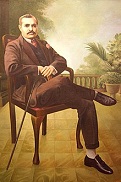
In 1936 the Brahma Kumaris (originally Om Mndall) Hindu religious movement is founded in Hyderabad, Sindh, India by Brahma Baba (Dada Lekhraj Khubchand Kripalani) (1876-1969), teaching that all souls are intrinsically good and that all labels associated with the body must be transcended to establish the global "soul-consciousness" culture; too bad, it preaches equality of women and men, pissing-off the Indian pop., causing the Sindh govt. to outlaw it; by 2008 it has 825K adherents in 8.5K centers in 100 countries.

On Jan. 15, 1942 Jawaharlal Nehru (1889-1964) succeeds Mohandas K. Gandhi as head of India's Nat. Congress Party.
In Jan. 1946 the RAF Strikes in India sees 50K men in 60+ RAF stations in India and Ceylon strike after being told they were to be used to maintain British rule rather than be sent home, becoming the biggest British military mass revolt in history; this leads to the Royal Indian Navy Mutiny of 1946 against British rule on Feb. 18-25, which starts in Karachi and spreads to Calcutta, involving 20K+ sailors in 78 ships and shore establishments; civilians in Bombay support with a 1-day gen. strike, which spreads to other cities.

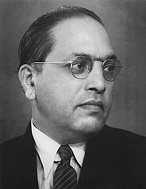
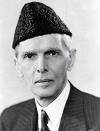



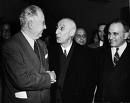
On Aug. 14, 1947 India becomes independent after 200 years of British rule, and on Aug. 15 Britain voluntarily withdraws its troops as the Union Jack complete with the Star of India is taken down from Viceroy's House in New Delhi seconds after midnight on Aug. 14/15; on Aug. 15 Jawaharlal Nehru (1899-1964) becomes PM #1 of India (until May 27, 1964); on Aug. 15 Untouchable (Dalit) polymath Bhimrao Ramji "B.R." Ambedkar (1891-1956) AKA Babasaheb, principal architect of the 1949 Constitution of India and author of Annihilation of Caste (1936) becomes law and justice minister #1 (until Sept. 1951); Mahatma Gandhi lobbies for the Union Jack to be placed on the Indian flag, with the soundbyte: "Though the British might have inflicted harm on the Indians, it was not done by their flag"; the Partition of India sees India and Pakistan (West Pakistan and East Pakistan, 1K mi. apart), led by secular Muslim gov.-gen. #1 Muhammad Ali Jinnah (1876-1948) (Aug. 11) become independent dominions of the British Commonwealth; they are separated by the Wagah (Wagha) Rd. on the Grand Trunk Rd., marking the Radcliffe Line of demarcation; Nawabzada Liaquat Ali Khan (1896-1951) becomes PM #1 of Pakistan (until Oct. 16, 1951); Jinnah becomes "Father of the Nation" of Pakistan, and his dentist sister Fatima Jinnah (1893-1967) becomes "Mother of the Nation"; 400M people (20% of the pop. of the Earth) gain independence from Whitey, er, Britain; the Majlis e Shura (Parliament) of Pakistan is established, with a Senate and Nat. Assembly, located in Karachi until 1960, when it moves to Islamabad; the word "Pakistan" was concocted from Punjab, Afghan, Kashmir, and Baluchistan; Bombay becomes a state of India; in 1947-51 15M people migrate between Pakistan and India; Henry Francis Grady (1882-1957) becomes the first U.S. ambassador to India (until 1948); too bad, Jinnah starts out with a speech seemingly promising a secular state where "Hindus will cease to be Hindus and Muslims will cease to be Muslims, not in a religious sense, for that is the personal faith of an individual, but in a political sense as citizens of one state", then after Hindu-Muslim rocks the house, on Oct. 11 he flip-flops, saying "We should have a state in which we could live and breathe as free men and which we could develop according to our own lights and culture and where principles of Islamic social justice could find free play", then next Feb. 21 adds "We have to stand guard over the development and maintenance of Islamic democracy, Islamic social justice and the equality of manhood in your own native soil"; meanwhile Hindu-Muslim violence kill 200K-1M, and creates 1M refugees in Pakistan and India; Gandhi begins a fast in protest at the partition of Pakistan and India; on Oct. 26 despite a rebellion of the Muslim pop., Hindu maharaja (last) (1925-61) Hari Singh (1895-1961) of Muslim-majority Kashmir signs the Instrument of Accession with India; Lord Mountbatten promises that no permanent union with India will be accepted without a plebiscite by the Kashmiri people, but the Indian govt. hogs its way in and pushes the plebiscite into the future, triggering the Kashmir Conflict (War) (ends ?), causing heavy fighting and becoming a recipe for decades of torment.
On Jan. 17, 1948 the U.N. Security Council votes 9-0-2 (Ukraine, U.S.S.R.) to approve Resolution 38, calling upon the govts. of India and Pakistan to refrain from aggravating the situation in Kashmir, and to inform the council of any changes in the situation.
On Jan. 20, 1948 the U.N. Security Council votes 9-0-2 (Ukraine, U.S.S.R.) to approve Resolution 39, establishing a 3-man committee to advise it on the best course of action in Kashmir.

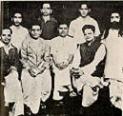

On the same day Charles I was beheaded? On Jan. 30, 1948 after sticking up for Muslims and trying to get India to pay them 550M rupees it owes them, while on the way to a night prayer meeting Mahatma Mohandas Karamchand Gandhi (b. 1869) is assassinated in New Delhi with three shots in the chest at point blank range by 37-y.-o. right-wing Hindu nationalist Nathuram Vinayak Godse (1910-49), a member of the high Hindu caste, who is hanged on Nov. 15, 1949 along with ringleader Narayan Dattatraya Apte (1911-49); French photojournalist Henri Cartier-Bresson (1908-2004) gains internat. fame for his coverage of Gandhi's funeral on the banks of the Ganges River on Jan. 31, where he is cremated.
On May 1, 1949 Bombay, India absorbs the princely state of Baroda State, then goes on to absorb the princely states of the Gujarat States Agency incl. Rajpipia, Chota, Udaipur, and Baria.
On Aug. 19, 1949 the new planned city of Bhubaneswar (Sansk. "Tribhubaneswara" = Lord of the Three Worlds) on the E coast replaces Cuttack as the capital of Odisha, India, becoming known as "the twin cities of Odisha" (modern-day pop. 1.7M).
On Aug. 15, 1950 (7:39 p.m. local time) an 8.6 earthquake in the Mishmi Hills of Assam, India E of the Himalayas in the North-East Frontier Agency affects 30K sq. mi., and kills 4.8K in India and Tibet, leaving 5M homeless; the largest recorded earthquake caused by continental collision rather than subduction (until ?); the only big one in this decade?
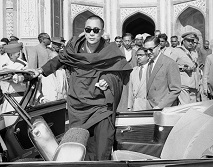
On Oct. 6, 1950 40K Chinese troops invade Tibet, starting the Battle of Chamdo, defeating the 8K-man Tibetan force and taking Chamdo on Oct. 19 after killing, wounding, or capturing 3,341, pissing-off the U.S. Britain, India and other countries; in Nov. the Tibetan nat. assembly holds an emergency session, requesting 16-y.-o. Tibetan Dalai Lama #14 (since Feb. 22, 1940) "His Holiness" Tenzin Gyatso (Lhamo Thondup) (1935-) to become head of state, which he does on Nov. 17 after the People's Repub. of Chna incorporates Tibet, appealing to the U.N. for aid, after which he flees Lhasa for Dromo near the Indian border; too bad, India objects to a U.N. Gen Assembly discussion, calling it a local problem for them and China.
On Mar. 30, 1951 after India and Pakistan sign the Karachi Agreement establishing a ceasfire line, the U.N. Security Council votes 8-0-3 (India, Yugoslavia, U.S.S.R.) to adopt Resolution 91 establishing the U.N. Military Observer Group in India and Pakistan (UNMOGIP) to monitor it.

On Jan. 23, 1957 Indian nationalist diplomat V.K. (Vengalil Krishnan) Krishna Menon (1896-1974) gives a speech on Kashmir to the U.N. Gen. Assembly that lasts for 8 hours, becoming the longest U.N. speech until ?
On Oct. 23, 1959 India announces that Red Chinese troops have clashed with Indian troops in Kashmir; on Oct. 26 Indian border police clash with Chinese troops in Ladakh; on Oct. 24 Chinese PM Zhou Enlai first uses the phrase "Line of Actual Control" in a letter to Indian PM Jawaharlal Nehru, which gains legal recognition in agreements signed in 1993 and 1996.
On Dec. 9-14, 1959 Pres. Eisenhower visits India, and addresses parliament, issuing the soundbyte: "We who are free and we who prize our freedom above all other gifts of God and Nature must know each other better, trust each other more, and support each other."
Speaking of a shitty year? In 1961 the 7th Cholera (El-Tor) Pandemic (first 1817) begins in Indonesia, spreading to Bangladesh in 1963, India in 1964, the Soviet Union in 1966, Baku in 1972, then North Africa and Italy by 1973, finally reaching Japan and the South Pacific before petering out in the 1970s.

On May 13, 1962 Indian East-meets-West philosopher (1st vice-pres. in 1952) Savepalli Radhakrishnan (1888-1975) becomes pres. #2 of India (until May 13, 1967).

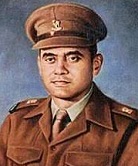
In June 1962 after Indian troops cross in Oct. 1959 in order to establish posts on the Lanak Pass, a border war erupts between China and India in the Kongka La (Pass) low ridge pass in the Himalayas (Aksai Chin in China, Ladakh in India), leading to a battle on Sept. 21, followed on Oct. 20 by the Sino-Indian Border Conflict (War) (1st Indo-China War) as Chinese Communist forces invade India, causing Indian pres. Nehru to ask for U.S. military aid on Oct. 29, then dismiss defense minister V.K. (Vengalil Krishnan) Krishna Menon (1896-1974) on Oct. 31 and assume his post; too bad, the U.S. and U.K. refuse to sell India advanced weaponry, forcing them to turn to the Soviet Union, who supply them with advanced MiG fighters, which they never deploy; on Nov. 18 the Battle of Rezang La 11 mi. of the Spanggur Gap that divides China and India sees the Indian 13 Kumaon Regiment led by Maj. Shaitan Singh (b. 1924) make their last stand, with 114 of 120 Indian soldiers KIA vs. 1.3K Chinese soldiers; Sing is posth. awarded the Param Vir Chakra, India's highest millitary decoration;on Nov. 19 as Indian troops retreat from a massive Chinese attack, Nehru asks JFK for further military aid, and on Nov. 21 the U.S. sends transport planes with U.S. crews, causing China to unexpectedly order a ceasefire along the Indian border on Nov. 21 and offer to withdraw its troops back of the "lines of actual control" existing on Nov. 7, 1959; on Dec. 14 after Nehru rejects the Chinese offers, India announces that the Chinese are beginning a massive troop withdrawal from the NE frontier region, after which neither country patrols this part of the border.
On Nov. 21, 1963 India launches its first rocket from Thumba in Kerala state in S India, a U.S.-made 2-stage Nike-Apache sounding rocket, and founds the Vikram Sarabhai Space Center in Trivandrum, Kerala; by 2010 they launch 2.2K rockets from the center after getting into a space race with Red China in the 20-zeds.
Speaking of rats? On Mar. 25, 1965 the Times of India reveals that the country's 2.4B rats eat as much food as its 400M Indians.
On Aug. 5, 1965 the undeclared Indo-Pakistani (Kashmir) War of 1965 (ends Sept. 23) begins with India charging Pakistan with infiltrating with irregulars, after which on Aug. 6 Indian forces cross the ceasefire line in an offensive toward Lahore, winning their first major mountain battle on Aug. 14-15, after which the Pakistanis counterattack around Tithwal, Uri, and Punch, causing an Indian thrust into Azad Kashmir, capturing the key pass of Haji Pir 5 mi. inside the Pakistan border; on Sept. 1-19 72 Pakistani tanks and two infantry brigades counterattack in Punjab, catching the Indians unprepared and causing heavy losses, causing Indian air counterattacks, which Pakistan copies on Sept. 2, followed on Sept. 6 by a paratrooper raid of Punjab; on Sept. 4 the U.N. Security Council unanimously adopts Resolution 209, calling for a ceasefire and cooperation with the U.N. Military Observer Group in Pakistan; on Sept. 6 the U.N. Security Council unanimously adopts Resolution 210 calling for a ceasefire in Kashmir, on Sept. 8 Britain bans arms supplies to India, while the U.S. lends military aid to both sides, despite a Pakistani loan agreement with Communist China; on Sept. 20 the U.N. Security Council votes to approve Resolution 211 calling for a ceasefire on Sept. 22 at 07:00 GMT, with both sides withdrawing to their pre-Aug. 5 positions, which is accepted by both sides by Sept. 22, and marked by frequent violations for months, with India having control of two-thirds of Kashmir, after a total of 3K Indians and 3.8K Pakistanis are KIA.

On Jan. 4-10, 1966 Indian PM Lal Bahadur Shastri and Pakistani pres. Ayub Khan meet in Moscow under the auspices of Soviet PM Alexei Kosygin, and on Jan. 10 sign the Tashkent Agreement over Kashmir in Tashkent, Uzbekistan, agreeing to withdraw troops to the Aug. 1965 lines and restore diplomatic relations, and promising a peaceful discussion of the problems without specifics; too bad, India fails to renounce guerrilla warfare; on Jan. 11 Shastri dies of a heart attack in Tashkent, and on Jan. 19 Mrs. Indira Gandhi (nee Nehru) (1917-84), daughter of Jawaharlal Nehru is elected PM and head of the Congress Party, taking office as PM #3 of India on Jan. 24 (until Mar. 24, 1977); meanwhile India suffers the worst famine in 20 years after crops fail in Bihar, and U.S. Pres. Johnson asks Congress for $1B to aid them, exporting 8M tons of wheat, which pisses-off rice-eaters in Karala State, who stage protests; meanwhile world food production lags 2% behind last year; too bad, after U.S. agricultural secy. Orville H. Freeman urges farmers to plant huge crops, and 6M tons of wheat are shipped to India (whose 1965 crop was 12.3M metric tons), farm prices fall next year, pissing-off farmers, although 10K receive $20K+ in subsidies, 6.5K receive $25K+, 15 receive $500K+, and five get $1M+ - go girl, you should write a book?

On May 3, 1969 Indian pres. (since May 13, 1967) Zakir Hussain (b. 1897) dies in New Delhi (first Indian pres. to die in office), and on Aug. 16 Telugu-speaking vice-pres. (since 1967) V.V. (Varahagiri Venkata) Giri (1894-1980) (who was expelled from 1916 for becoming involved in Sinn Fein) becomes pres. of India (until 1974) by a narrow margin after backing by Indira Gandhi and the left wing of the Congress Party.

Muslim Pakistan, split in two by Hindu India finally becomes two Muslim nations with India's help? On Mar. 1, 1971 Pakistani pres. Agha Mohammad Yahya Khan postpones the opening of the country's first popularly elected nat. assembly over a disagreement over the proposed new all-Pakistan constitution; meanwhile after the Bengal-based Awani League wins 167 of 313 seats, a revolt in East Pakistan simmers, with widespread riots and strikes; on Mar. 7 Bengali Sheik Mujibur Rahman (1920-75) of the Awami League gives a historic speech at the Race Course Ground in Dhaka (Dacca) before 1M, calling for civil disobedience and armed resistance, resulting in murders of non-Bengalis, pissing-off Yahya Khan, who calls him a traitor and on Mar. 25 orders the army sent in under bloody Operation Searchlight, which becomes known for systematically raping hundreds of thousands of Bengali women to make them unmarriageable, causing many suicides, assisted by the fanatical local Muslim paramilitary Razakars (Pers. "volunteers"), who consider that dismemberment of "Pure" Muslim Pakistan would be an offense against Islam itself; on Mar. 26 (midnight) East Pakistan proclaims independence, and Rahman is arrested and hauled off to Faisalabad (Lyallpur), West Pakistan (until Jan. 8, 1972), beginning the Bangladesh Liberation War (ends Dec. 17); on Apr. 25 the new bang-a-dish country takes the name Bengali Dish, er, Bangladesh ("Country of Bengal") (modern pop. 150M) (#7 most populous country on Earth), with capital at Dhaka (Dacca) (modern pop. 14.4M/18.9M) on the Buriganga River, known as the "the City of Mosques", with 90% of the country being Muslims (96% Sunni, 3% Shiite), and 9% Hindus; despite an Apr. 2 plea from the U.S., Soviet Union and other nations to settle it peacefully, Indian-Pakistani troops clash along the East Pakistani frontier on Apr. 24-25; 200K-3M East Bengalis are eventually killed in the fighting, while 8M-10M refugees flee to India; on Aug. 1 (2:30 p.m. and 8:00 p.m.) (Sun.) the Concert for Bangladesh is held by ex-Beatle George Harrison in Madison Square Garden in New York City, with help from Bob Dylan, Ravi Shankar, Eric Clapton, Ringo Starr, Billy Preston, Leon Russell, Badfinger et al., to a crowd of 40K, becoming the first large benefit concert in history; it raises $243,418.51, which is administered by UNICEF, after which sales of the triple album and concert film bring in more bucks; on Dec. 6 after failing to come to an agreement, the U.N. Security Council votes 11-0-4 for Resolution 303 (France, Poland, U.K., U.S.S.R.) referring the matter to the U.N. Gen. Assembly; meanwhile the Pakistani govt. begins persecuting the 5K-sq.-mi. Chittagong Hill Tracts, committing genocidal acts against its mainly Buddhist pop. while attempting to resettle the area with Bengalis, killing 10K in 1980-97.

On Nov. 22, 1971 the Indo-Pakistan War of Independence begins after guerrilla fighting escalates on the border of East Pakistan, and India masses 12 divs. near the border; on Dec. 1 India launches a full scale attack against Pakistan, invading East Pakistan (Bengal) on Dec. 4 and routing West Pakistani occupation forces to support the new state of Bangladesh, all without a formal declaration of war, causing the U.S. to suspend arms shipments to India, having done the same to Pakistan in Sept.; on Dec. 3 Pakistan attacks Indian airfields in Kashmir and India mobilizes its army; on Dec. 6 India recognizes the new Dem. Repub. of Bangladesh, and Pakistan breaks off diplomatic relations; on Dec. 16, AKA Victory Day Pakistan surrenders, ending the war, and on Dec. 20 Pakistani pres. Yahya Khan is forced to resign, and placed under house arrest; on Dec. 20 Berkeley, Calif. and Oxford-educated deputy PM Zulfikar Ali Bhutto (1928-79), 1967 founder of the center-left Pakistan Peoples Party is sworn-in as pres. #4 of Pakistan (until Aug. 13, 1973), returning the country to civilian rule for the 1st time since 1958, and Sheik Mujibur Rahman is nominated as pres. #1 of Bangladesh (until Aug. 15, 1975); under Bhutto, civilian-ruled Pakistan decides to develop a nuclear weapons program.
On May 18, 1974 India announces the successful underground test of Smiling Buddha (Pokhran-I), a 10-to-15 kiloton nuke in the Rajasthan Desert near Pokaran, becoming nation #6 to join the Big Boom Club after the U.S., Soviet Union, U.K., France, and China; Canada protests and suspends aid to India's atomic energy program; the U.S. and France think twice about supplying Iran with nuclear reactors, with the U.S. State Dept. uttering the soundbyte that if the shah is overthrown, "domestic dissidents or foreign terrorists might easily be able to seize any special nuclear material stored in Iran for use in bombs", and "an aggressive successor to the shah might consider nuclear weapons the final item needed to establish Iran's complete military dominance of the region", but in June the U.S. agrees to supply Iran with two nuclear reactors, and on July 27 France signs a $4B 10-year development pact with Iran, which incl. sale of five 1GW nuclear reactors; next Jan. the U.S. signs a $6.4B agreement with Iran to purchase eight more reactors; too bad, the Feb. 1979 Islamic Rev. ends all that; meanwhile after a referendum nuclear giant India annexes the Himalayan Buddhist kingdom of Sikkim, ending their 330-y.-o. dynasty and alarming Bhutan, whose 10-y.-o. king Jigme Singye Wangchuck (1955-) took over two years ago on July 21, 1972 after his father (king since 1952) Jigme Dorji Wangchuck (b. 1929) died of heart failure in Nairobi, Kenya, and is formally crowned as dragon king #4 on June 2 (until Dec. 14, 2006), becoming the world's youngest king; by law everyone in Bhutan must wear traditional 14th cent. clothing, and the country has no traffic lights; his daddy ended feudalism and slavery, and introduced wheeled vehicles; the annexation is completed next May 16.

On Mar. 24, 1977 after Indira Gandhi frees most of her political prisoners but doesn't stop voters from repudiating her 18-mo. emergency rule, longtime Indian freedom fighter (orthodox Hindu) Morarji Desai (1896-1995) of the new Janata Party becomes PM #4 of India (until July 28, 1979), becoming the first not belonging to the Congress Party as its dominance is finally broken; too bad, it is revealed that 500 unmarried women were forcibly sterilized during Gandhi's emergency, and 1.5K men died from botched vasectomies, causing family planning to be virtually shut down and the Ministry of Health and Family Planning to change its name to Ministry of Health and Family Welfare, after which surgical sterilizations plummet from 12M a year in 1975 to 1.8M a year.
On Jan. 6, 1980 33 mo. after a humiliating defeat, Indira Gandhi's Congress Party wins elections in India after her youngest son Sanjay Gandhi (b. 1946) engineers it; on Jan. 14 Indian PM #3 (1966-7) Indira Gandhi becomes PM #6 of India (until Oct. 31, 1984); too bad, Sanjay is convicted of profiteering from an automobile project, and dies along with his flight instructor on June 23 while doing illegal aerial acrobatics.
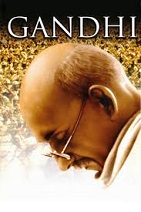
On Nov. 30, 1982 Richard Attenborough's Gandhi (Goldcrest Films) debuts, an epic about the Mahatma's life starring Ben Kingsley; Candice Bergen plays Margaret Bourke-White; John Gielgud plays the 1st baron Irwin; Athol Fugard plays Gen. Jan Christiaan Smuts; Trevor Howard plays Judge R.S. Broomfield; Martin Sheen plays fictional journalist Vince Walker, based on Webb Miller; Ian Charleson plays Rev. Charles Fleer Andrews; the funeral scene has 300K extras; does $127.8M box office on a $22M budget.
On Apr. 13, 1984 India launches Operation Meghdoot, putting most of the Siachen Glacier in Kashmir under their control, triggering the Siachen Conflict (War) with Pakistan, becoming the first assault launched on the world's highest battlefield; over the next 15 years 10K Indian and Pakistani casualties, largely due to frostbite and mountain sickness result; it becomes a V for India on Nov. 25, 2003 after 19 years 7 mo. 1 week and 5 days.
On June 5-6, 1984 after Sikh extremists occupy it, the Indian Army stages Operation Blue Star, a siege of the 1589 Golden Temple of Amritsar most sacred of all Sikh shrines, claiming it for an army depot, with 600-1.2K killed in the bloody attack before they take it over; the Sikhs vow to get Indira Gandhi for it?

On Oct. 24, 1984 the Calcutta Metro Railway (begun 1973) opens with a 3.4km section between Esplanade and Bhowanipur; by 1995 it covers 16.5km with 17 stations, 15 underground and one elevated to serve a city of 11M, along with a 68km tram. On Oct. 31, 1984 after uttering the Oct. 30 soundbyte "I don't mind if my life goes in the service of the nation - if I die today every drop of my blood will invigorate the nation", Indian PM #6 (since Jan. 14, 1980) Indira Priyadarshini Gandhi (nee Nehru) (b. 1917) is assassinated by two Sikh members of her personal guard to avenge the Golden Temple of Amristar; 1K+ are killed in anti-Sikh riots; her eldest son (grandson of Nehru) ("Mister Clean") (a pilot) (Zoroastrian) Rajiv Ratna Gandhi (1944-91) becomes PM #7 of India (until Dec. 2, 1989); in Nov. riots in New Delhi and other cities kill 2K+ Sikhs. In Oct. the Chinese Communist Party announces economic reforms, a plan to lift govt. price subsidies, and promises to relax party control over enterprises.
On May 21, 1991 Indian PM #6 (1984-9) Rajiv Ratna Gandhi (b. 1944) is assassinated by suicide bomber Thenmozhi "Gayatri" Rajaratnam of the Liberation Tigers of Tamil Eelam while campaigning for an election in the S Indian state of Tamil Nadu; his widow Sonia becomes pres. of the Congress Party in 1998, leading it to victory in the 2004 and 2009 parliamentary elections.


On June 21, 1991 Pamulaparti Venkata Narasimha Rao (1921-2004) becomes PM #10 of the Repub. of India (until May 16, 1996), becoming known as "the Father of Economic Reforms" and "New Chanakya" as he launches free market reforms created by Indian economist Subramian (Subramiam) Swamy (1939-) that rescue the nearly-bankrupt country despite heading a minority govt.; the govt. starts off by airlifting 67 tons of gold for a loan.
In Feb. 1992 India (which voted against its creation) finally recognizes Israel, allowing it to open an embassy in New Delhi, followed in May by India opening an embassy in Tel Aviv.

On Mar. 15, 1998 Indian pres. K.R. Narayanan invites Hindu Nationalist Party leader (PM for 2 weeks in May 1996) Atal Bihari Vajpayee (1924-2018) to form a coalition govt., and on Mar. 19 he becomes PM #10 of India (until May 22, 2004).
On May 11, 1998 India detonates Pokharan-II, which incl. an H-bomb, after which on May 28, 1998 Pakistan detonates its first nuke set called Chagai-I, and in Apr. 1999 both successfully test nuclear-capable missiles, making the world way more dangerous.
In May-July 1999 India and Pakistan go to war again for 11 weeks, and on Dec. 13, 2001 the Indian Parliament Attack sees Muslim terrorists kill six police and a civilian, and India blame Pakistan for it, which they deny, after which on May 2, 2003 they restore diplomatic relations, only to break them off again after the Pakistani Muslim Mumbai attacks on Nov. 26-29, 2008, then restore them again on Feb. 25, 2010.


On May 22, 2004 after the Indian Nat. Congress Party of Rajiv Gandhi's Italian-born widow Sonia Gandhi (Edvige Antonia Albina Maino) (1946-) wins parliamentary elections in India, causing PM Atal Bihari Vajpayee to resign, she shocks everybody by refusing to become PM after she takes the criticism of her Italian birth seriously, and finance minister Manmohan Singh (1932-) becomes Indian PM #15 (first Sikh) (until May 26, 2014).
In 2008 the proportion of malnourished people in poor countries rises for the first time since ?; by next year the number of the world's chronically hungry reaches 1B for the 1st time since 1970, an increase of 100M since this year; meanwhile India and Horn of Africa countries incl. Ethiopia begin leasing farmland to Saudi Arabia et al. in exchange for quick cash, low-paying jobs and lessons in industrialization of agriculture.
In 2008 a record 1,046,539 are naturalized as U.S. citizens this year, with most coming from Mexico, India, and the Philippines; Pres. Bush begins allowing 1K Iraq refugees into the U.S. per mo., which jumps to 19K a year next year, after which in 2009 Pres. Obama signs a bill adding thousands more from Palestine; illegal immigrants in the U.S.: 11.6M (Jan.) (v. 11.8M in Jan. 2007); the illegal immigrant pop. in the U.S. has increased 37% since 2000; the U.S. Border Patrol makes 723K arrests at the Mexican border this year (97% of total arrests) (vs. 1.7M in 1986 and 1.2M in 2005), which drops 27% next year after the ailing economy makes El Norte less attractive; the number of Border Patrol agents increases from 9K in 2001 to 20K by Sept. 2009, with 626 of 661 mi. of planned fencing and walls erected next year; money sent back to Mexico by Mexicans in the U.S. drops from $2.19B this Apr. to $1.78B in Apr. 2009 ($24B in 2007).

On Aug. 30, 2008 Danny Boyle's Slumdog Millionaire (Film4) (Warner Bros.) (Celador Films) debuts, written by Simon Beaufoy based on the 2005 novel "Q&A" by Vikas Swarup, starring English-born Dev Patel (1990-) in his film debut as Mumbai slumdog Jamal Malik, who faces long odds to go all the way to 20M rupees on the Indian version of "Who Wants to Be a Millionaire?" to save his childhood sweetheart Latika (played by Rubina Ali and Freida Pinto), and ends up in trouble with the police in a complex story with flashbacks of his horrible childhood; the show's MC Prem Kumar is played by Anil Kapoor; after he proves to the police that he didn't cheat because every answer came from a life experience, the lovers do a Bollywood dance at the C.S.T. train station to the song Jai Ho; does $377.9M box office on a $15M budget; on Apr. 22, 2009 allegations that Rafiq Qureshi attempted to sell his 9-y.-o. daughter Rubina Ali (1999-) for $300K are dropped; on May 14, 2009 the home of 10-y.-o. star Azharuddin Mohammed Ismail (1999-) is bulldozed for pre-monsoon control.
On July 20, 2009 after Hillary Clinton's first trip to India paves the way, the U.S. and India sign a defense pact, allowing U.S. arm sales to India, to the applause of U.S. defense contractors.
On Dec. 30, 2009 it is revealed that India is preparing for a possible 2-front war with China and Pakistan.
On Mar. 26, 2012 Chinese pres. Hu Jintao visits New Delhi, India; Tibetan protester Jampa Yeshi immolates himself before he arrives.
On Mar. 27, 2012 a bomb set by Maoist insurgents in Maharashtra, India kills 15 policeman and injures 13.
On Mar. 29, 2012 the 2012 BRICS Summit in New Delhi, India.
On Apr. 8, 2012 Pakistan pres. Asif Ali Zardari makes a religious pilgrimage to India, visiting the Suti Ajmer Sharif Shrine in Ajmer 250 mi. SW of New Delhi after meeting with Indian PM Manmohan Singh for the first pres. visit in seven years.

On May 26, 2014 Hindu nationalist Gujarat state minister (since 2001) (former tea vendor) Narendra Damodardas Modi (1950-) becomes PM #16 of India (until ?); Muslim jihadists vow revenge attacks worldwide.
On Apr. 25, 2015 China and Pakistan sign the China-Pakistan Economic Corridor (CPEC) Agreement for a project linking the Xinjian region of NW China to Port Gwadar in SW Pakistan; the al-Qaida-linked mag. Zarb-e-Momin ("Strike of the Faithful Muslim") claims that the project could lead to WWIII since the U.S. and India "will not tolerate the emerging Chinese economy's access to Middle East markets".
On May 3, 2015 the Nat. Socialist Council of Nagaland-Khaplang (NSCN-K) stages two ambushes of Indian security forces in Mon District, India along the Myanmar border kills eight and injures nine, becoming the first major incident since Apr. 7, 1998.
On Dec. 3, 2015 police in Lucknow, India arrest Hindu Kamlesh Tiwari for claiming that "the Prophet Muhammad was the first homosexual", after which Muslims stage anti-blasphemy protests across India and call for his beheading.
On Dec. 11-13, 2015 Japanese PM Shinzo Abe visits New Delhi, India for talks with Indian PM Narendra Modi.
In 2015 the Rohtang ("pile of corpses") Pass Tunnel through the Pir Panjal range in the Himalayas in India (begun 2010) is completed.
On Dec. 1, 2017 former U.S. Pres. Obama gives a speech in New Delhi, India, saying that India needs to "cherish and nurture" its Muslim pop., calling them integrated and considering themself Indian; he neglects to mention er, Pakistan?
On Mar. 22, 2018 Air India takes off from New Delhi, India and lands in Tel Aviv, Israel after becoming the first flight allowed to fly over Saudi Arabia.
On Apr. 28, 2018 the last remaining village in India gains access to electricity, a total of 600K villages, although 200M people still lack access.
On May 3, 2018 powerful dust storms in N India kill 100+ and injure 140.
On Aug. 22, 2018 the worst floods in a cent. in Kerala, India kill 400 and cause 1M to be displaced and be housed in camps.
On Sept. 6, 2018 India's supreme court strikes down a colonial-era law banning gay sex, causing celebrations across India.
On Sept. 19, 2018 India bans the Muslim practice of triple talaq or instant divorce as a violation of the rights of Muslim women.
On Feb. 14, 2019 40 Indian soldiers are killed and several injured after a suicide jihadist IED explodes near a convoy outside Srinigar, Jammu and Kashmir; Jaish-e-Mohammed claims responsibility; on Feb. 18 a clash in Pulwama, Jammu and Kashmir with Jaish-e-Mohammad jihadists sees nine killed incl. four Indian soldiers and a policeman; India accuses Pakistan of complicity, which it denies, after which on Feb. 19 Pakistan PM Imran Khan offers to investigate if India provides "actionable" proof, which the Indian govt. calls a "lame excuse"; on Feb. 26 Indian warplanes attack a militant training camp in Pakistan, claiming to kill "a very large number" of fighters, which Pakistan denies.
On Sept. 22, 2019 police in Chennai, India raid the house of M. Diwan Mujipeer for conspiring to form a jihadist gang called Ansarulla, with the intention of establishing Islamic rule in India.
On Dec. 11, 2019 both houses in India pass a controversial immigration bill that excludes Muslims, causing protests in New Delhi on Dec. 15, spreading to West Bengal.